Last updated on 20th March 2025
4 Days Trip into the Autonomous Region of Artsakh
The Volunteer Corps AVC and Birthright Armenia took their volunteers for a 4-day weekend trip (10 -13 Mai) to the Republic of Artsakh. Every year this excursion is the absolute highlight. For anyone who wants to go there I recommend to take little more time and stay longer as I think it’s worth it. Not so much exploring the cities but the rural areas and the vast natural beauty of the country, its mountains and its people.
The Wings of Tatev
On the way to Artsakh, in south-east Armenia, about 250km from Yerevan, there is a special sightseeing-highlight to visit: the Tatev monastery. The monasteries date back to the 9th century and are World Heritage Sites of UNESCO. Tatev played a significant role in the history of the country, in particular due to its university in medieval times. The monastery is built on the edge of a cliff providing a breathtaking view into a deep gorge and onto the surronding mountainous landscape. Tatev can be reached by car but far more exciting is the ride on the cable car, called the Wings of Tatev, apparently the longest reversible cable car in the world.
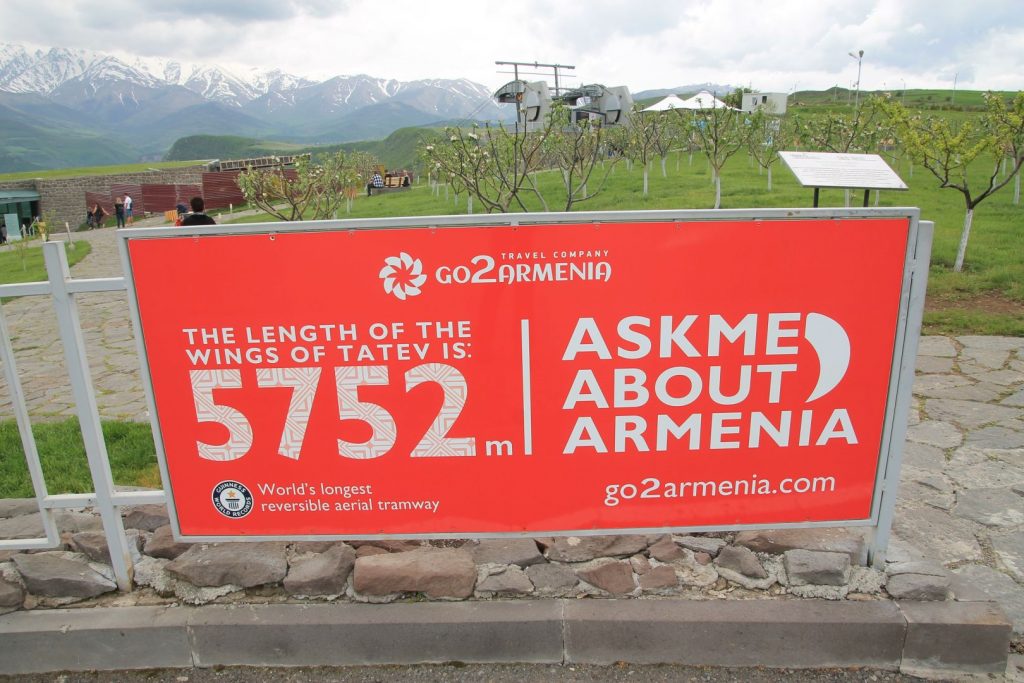
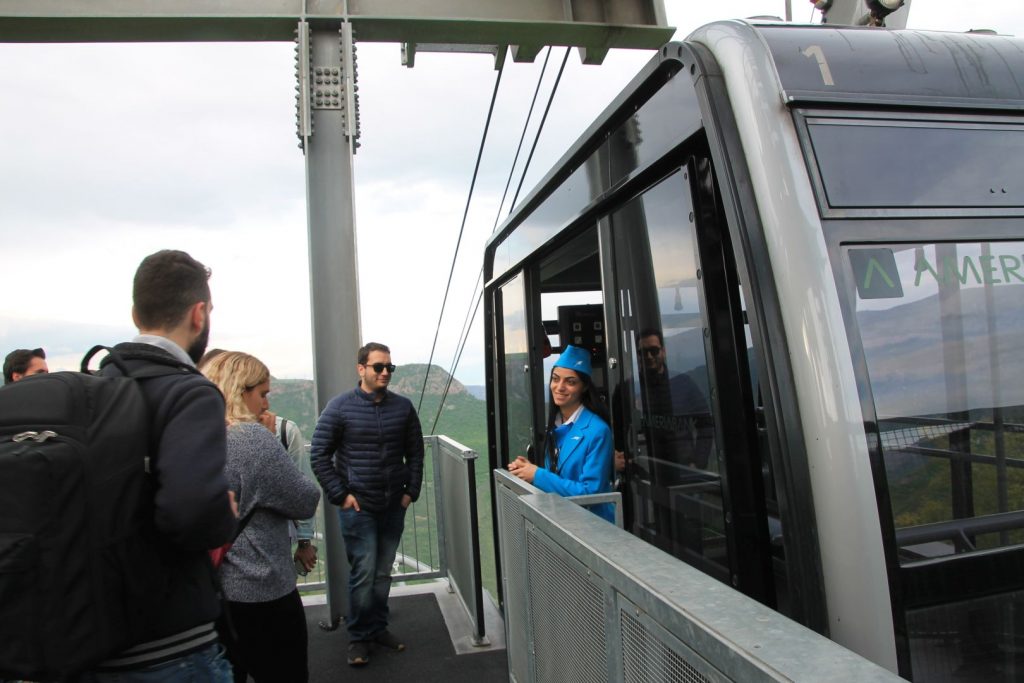
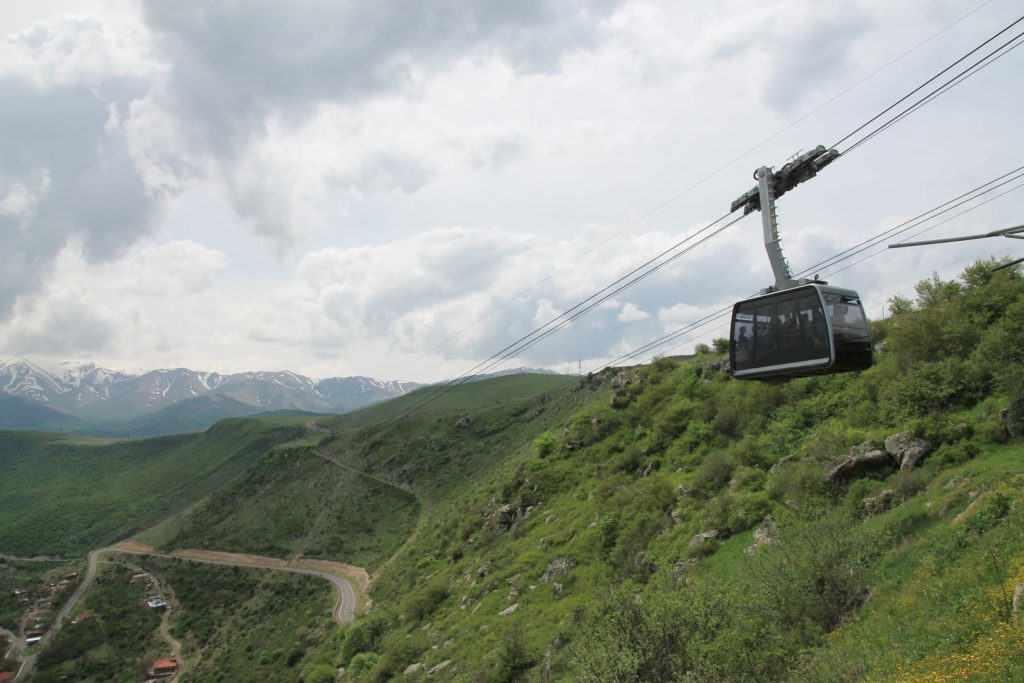
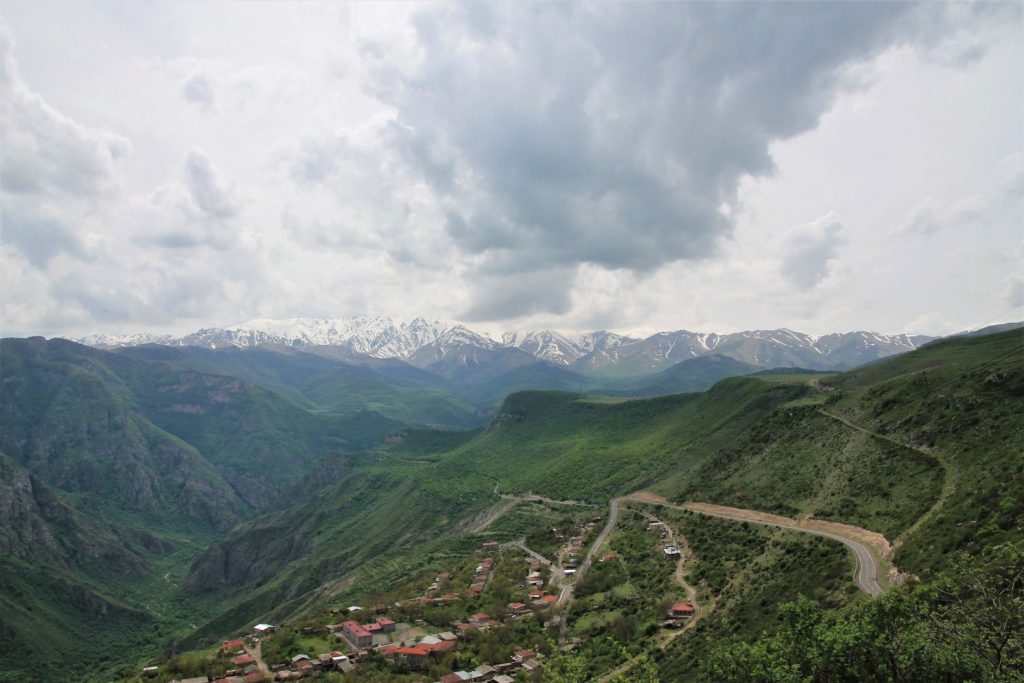
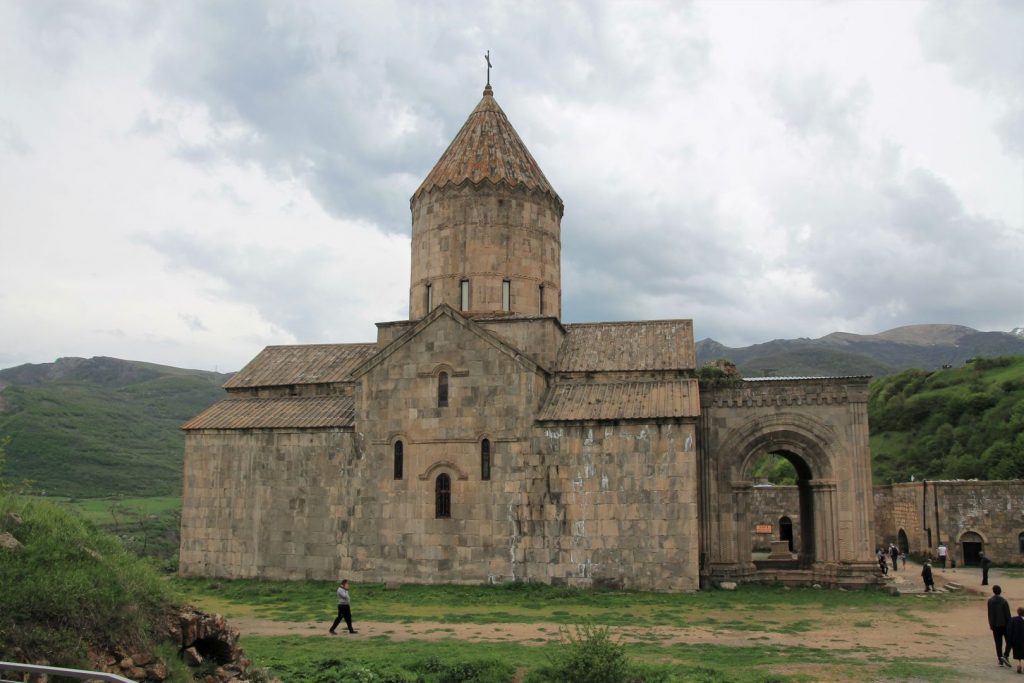
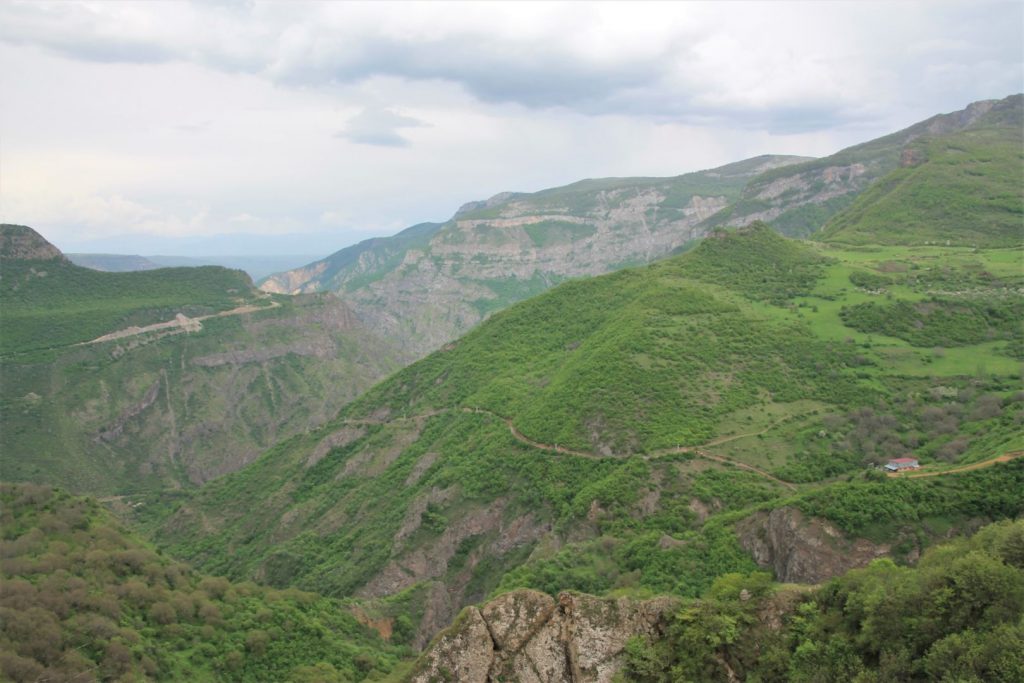
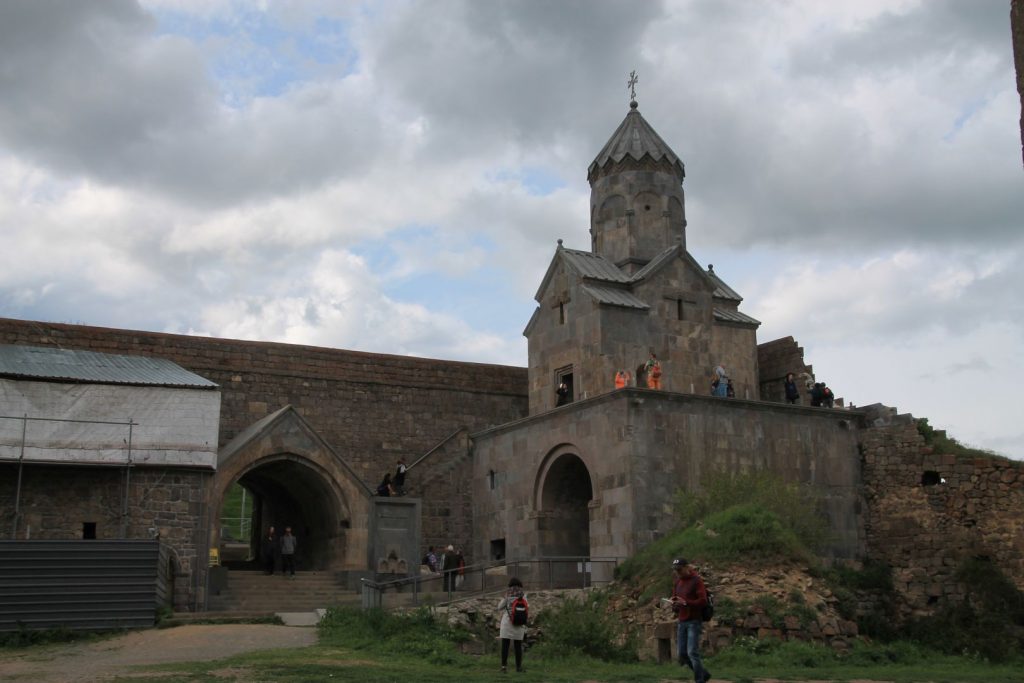
The 11th century S. Astvatsatsin church
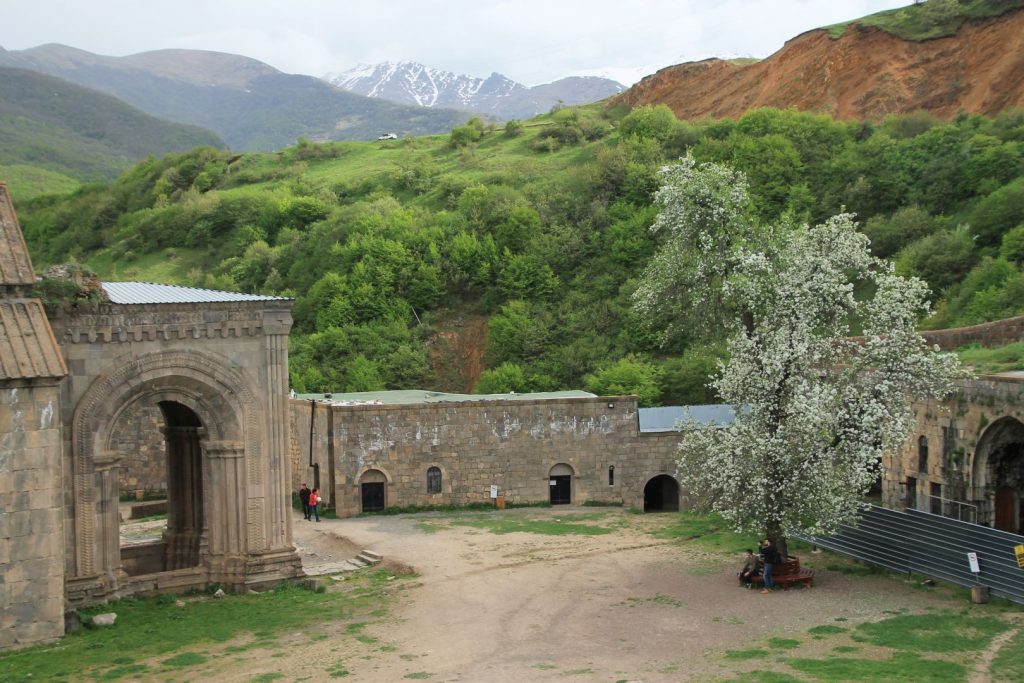
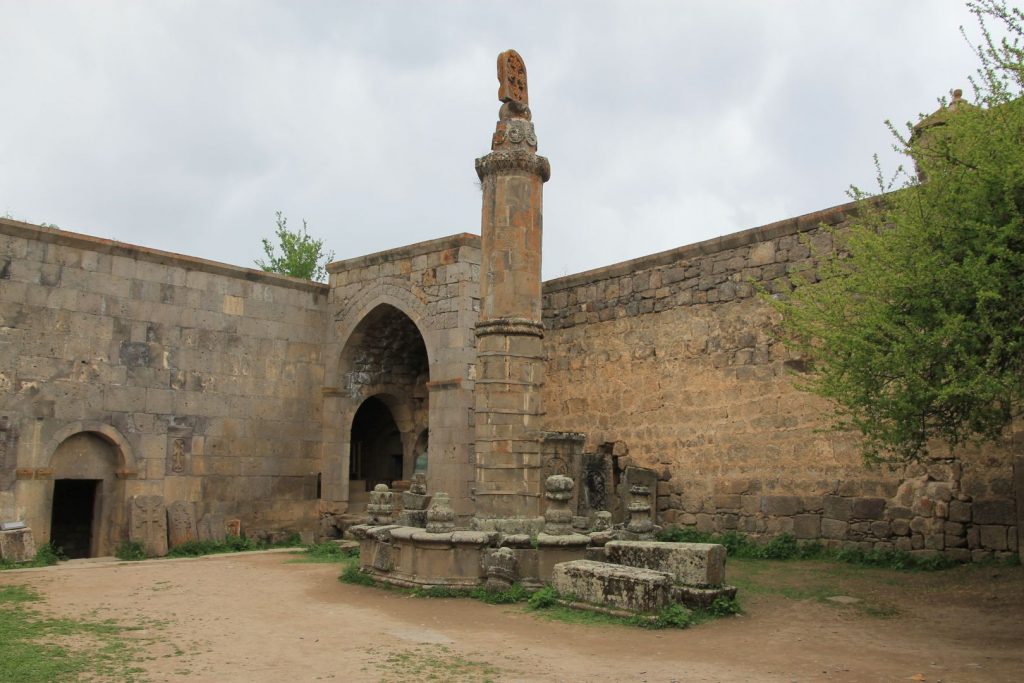
Seismographic balancing pillar : They say it swayes indicating a coming earthquake
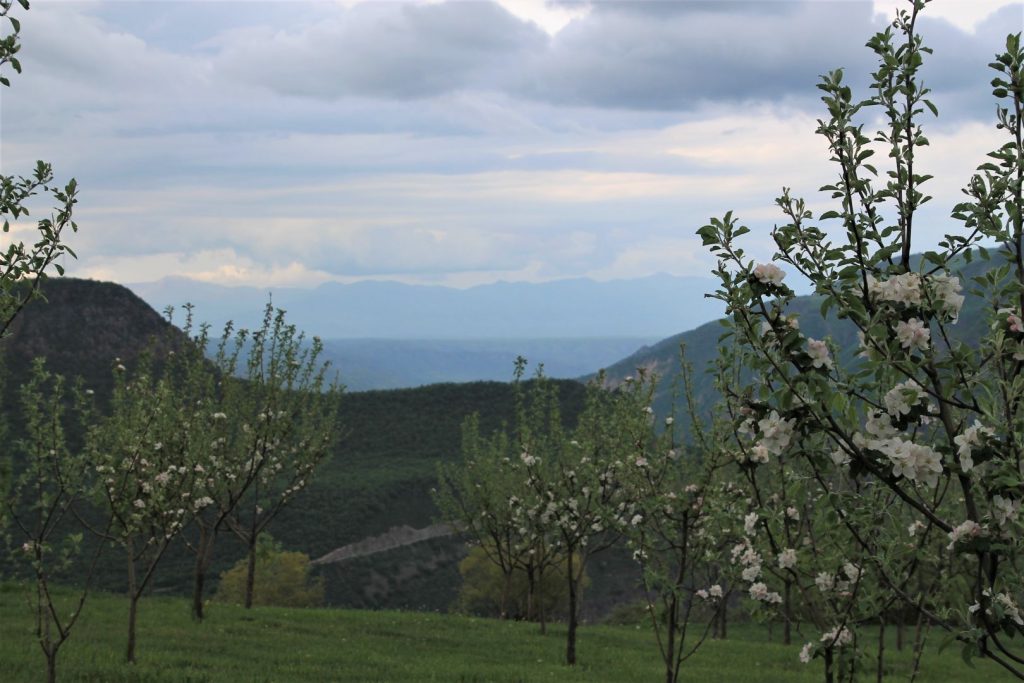
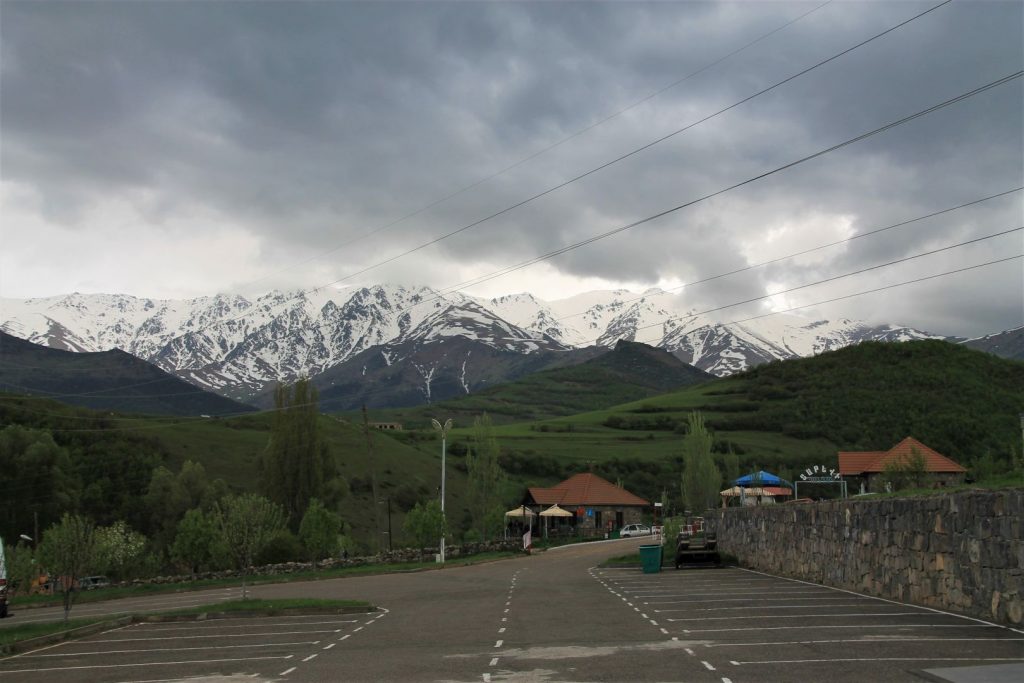
Capital City Stepanakert
Stepanakert is the capital city of Artsakh. It was namend to honor Stepan Shahumyan, the “Caucasian Lenin”. After major destruction at Shushi, the former regional capital, Stepanakert was made the capital of the Nagorno-Karabakh Autonomous Oblast (NKAO) in 1923. Stepanakert is the biggest city in Artsakh today. In town center there has been done a lot of works, still ongoing, and slowly the remains of the war disappear and it becomes a nice place for strolling and relaxing, for daily life and tourism. New buildings and a newly built church can be seen, fountains and parks were created, a football stadium too, flowers and green everywhere, trees have been planted and benches are inviting.
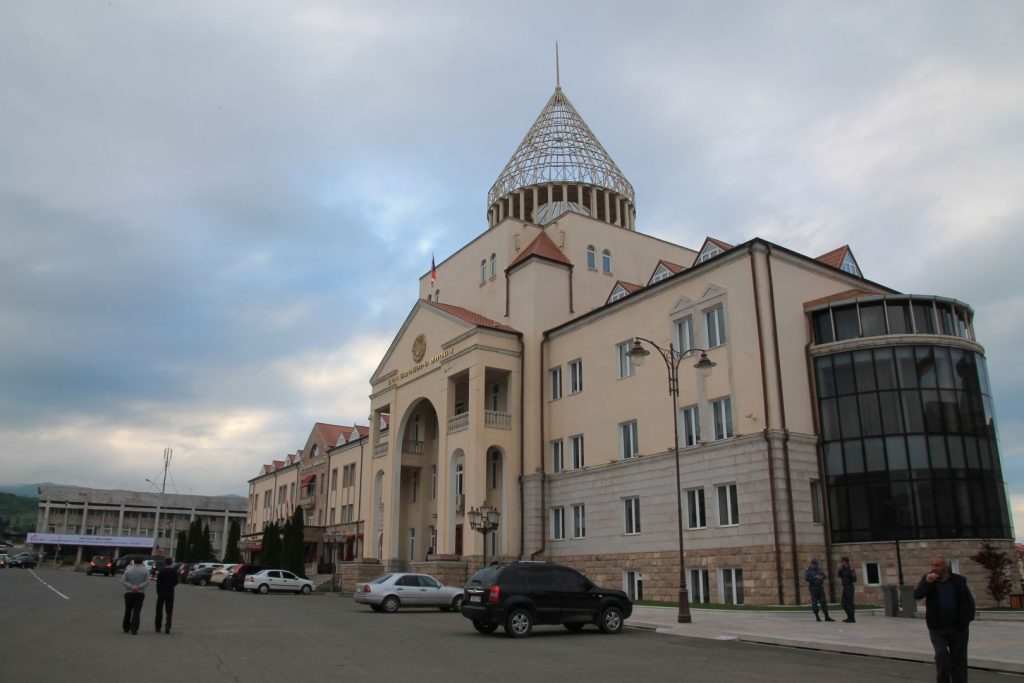
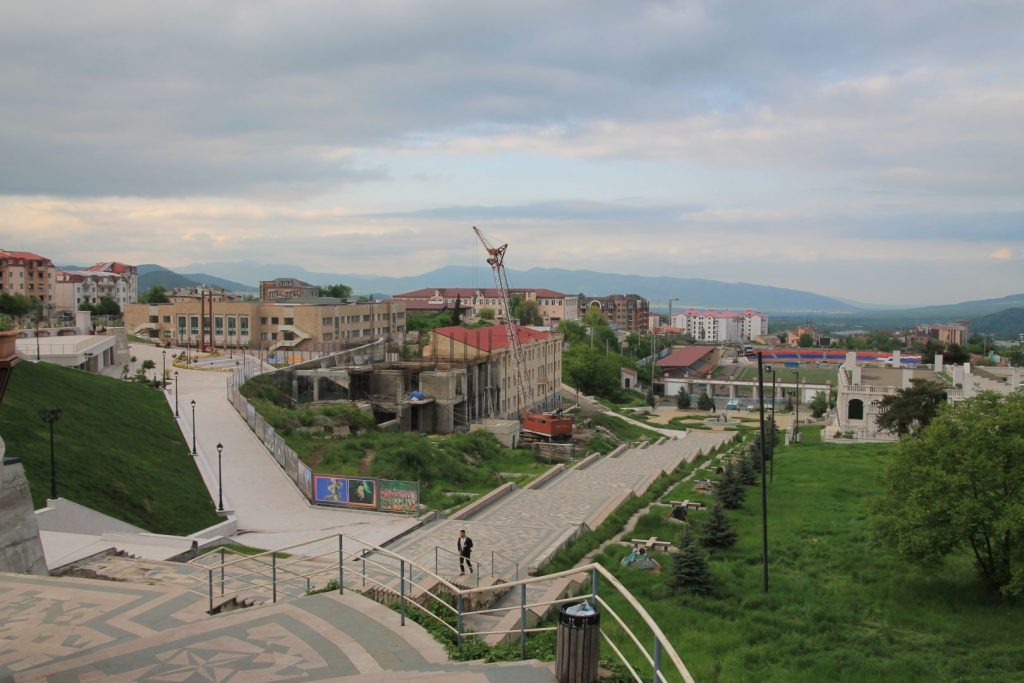
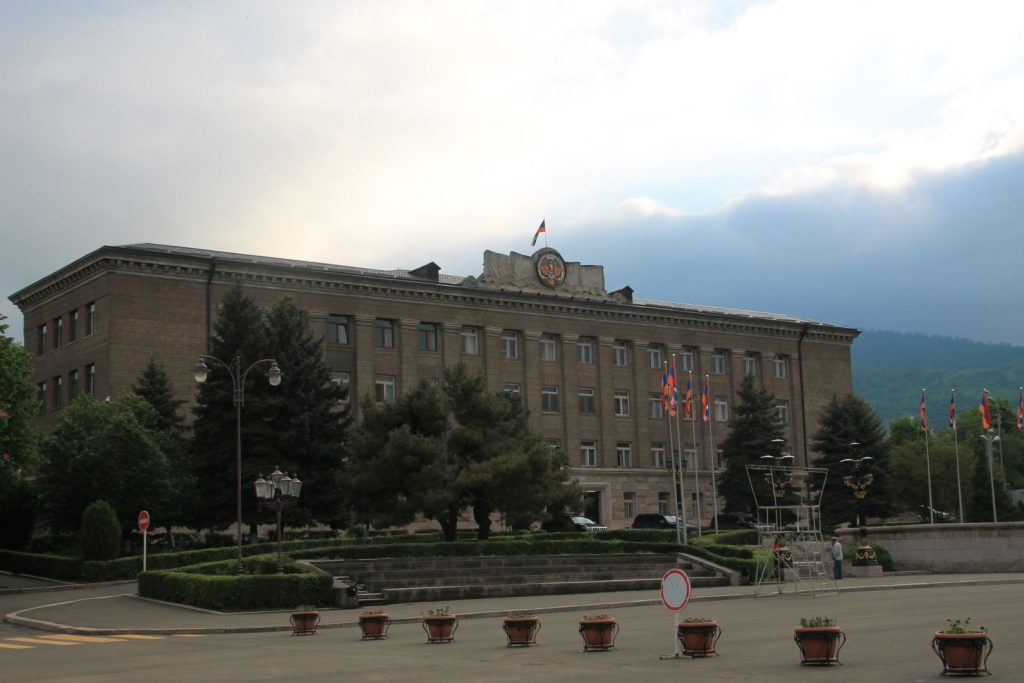
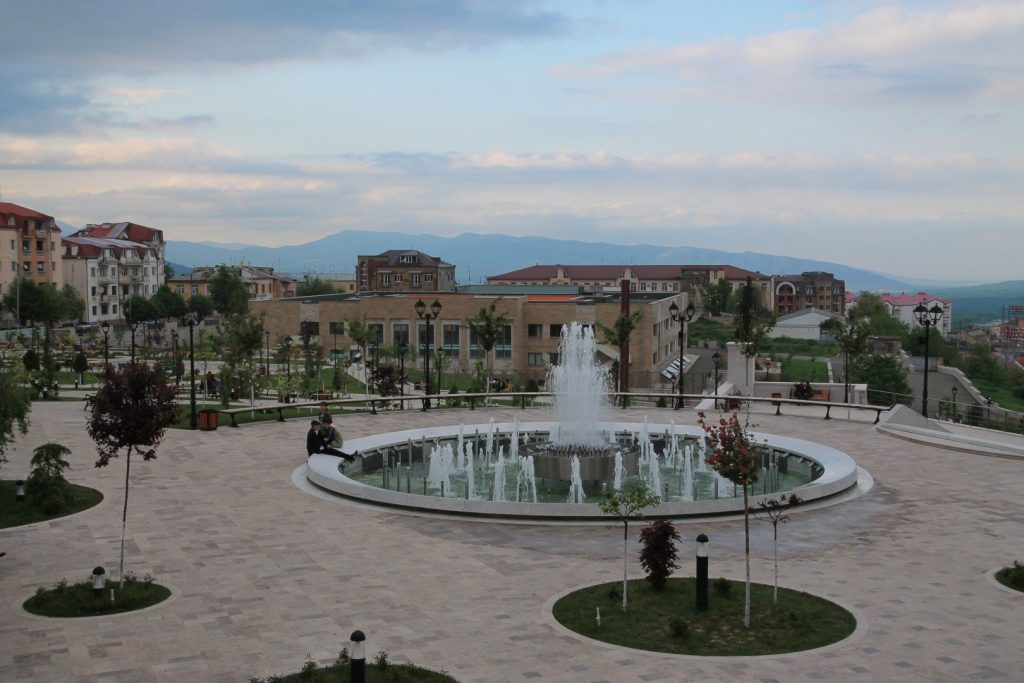
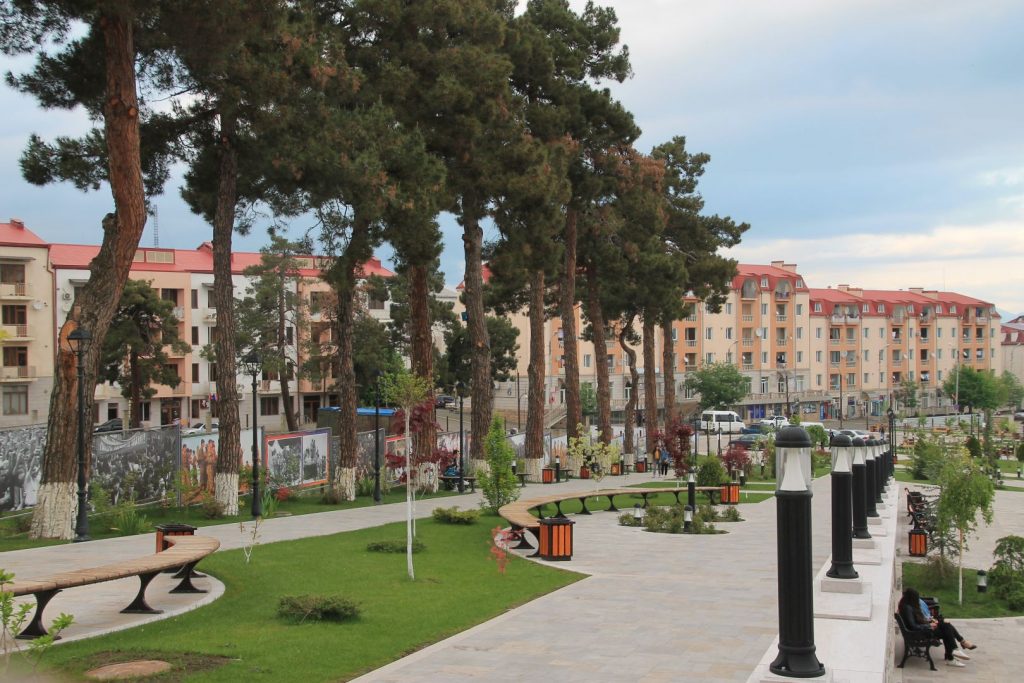
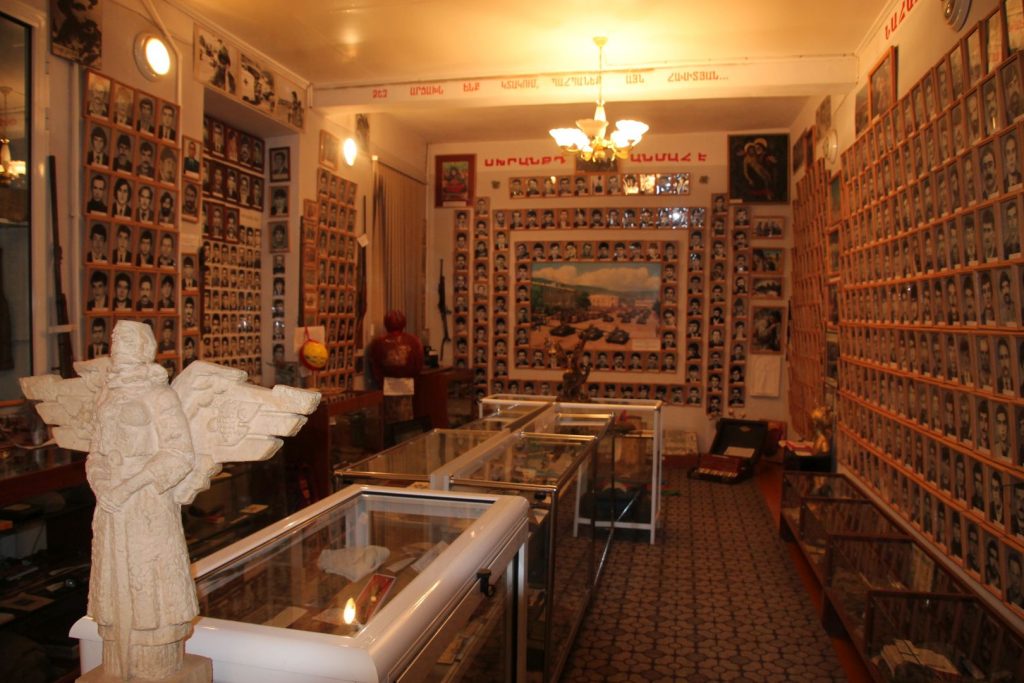
Shushi – City on the Mountaintop
Shushi was the town where we stayed at homes of host families. It is located maybe 20 min by car on a mountain top overlooking the nearby valley of Stepanakert. Due to this position the town was an important strategic point during the war defending Stepanakert. Shushi used to be the biggest city in Karabakh until it got destroyed by Turkish and Azerbaijani troups in 1920, known as Shusha massacre. Therefore there is much destruction still visible today.
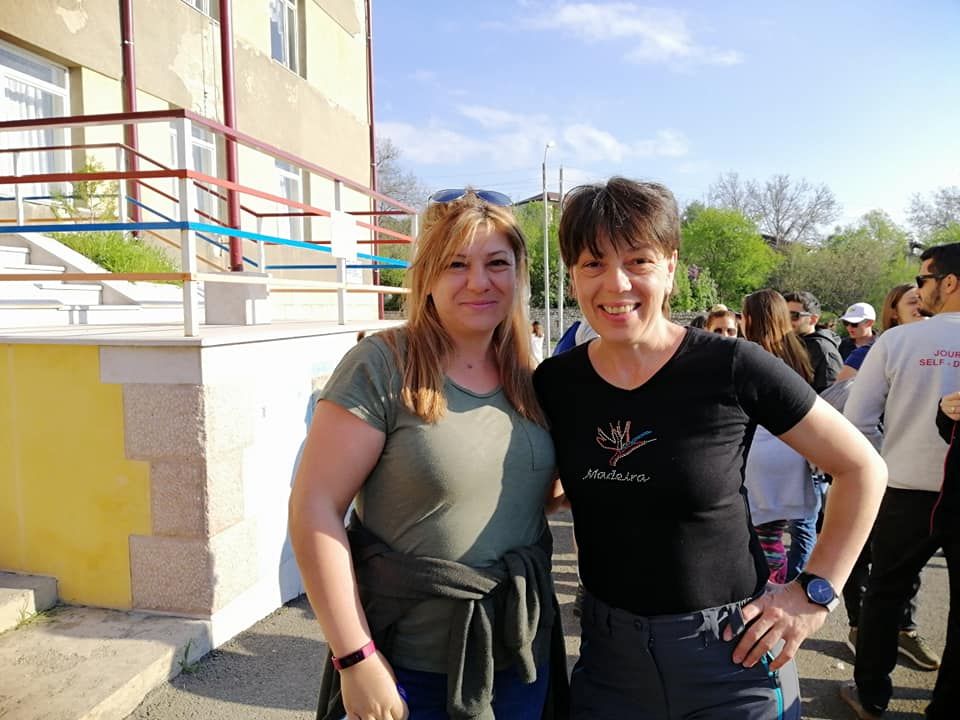
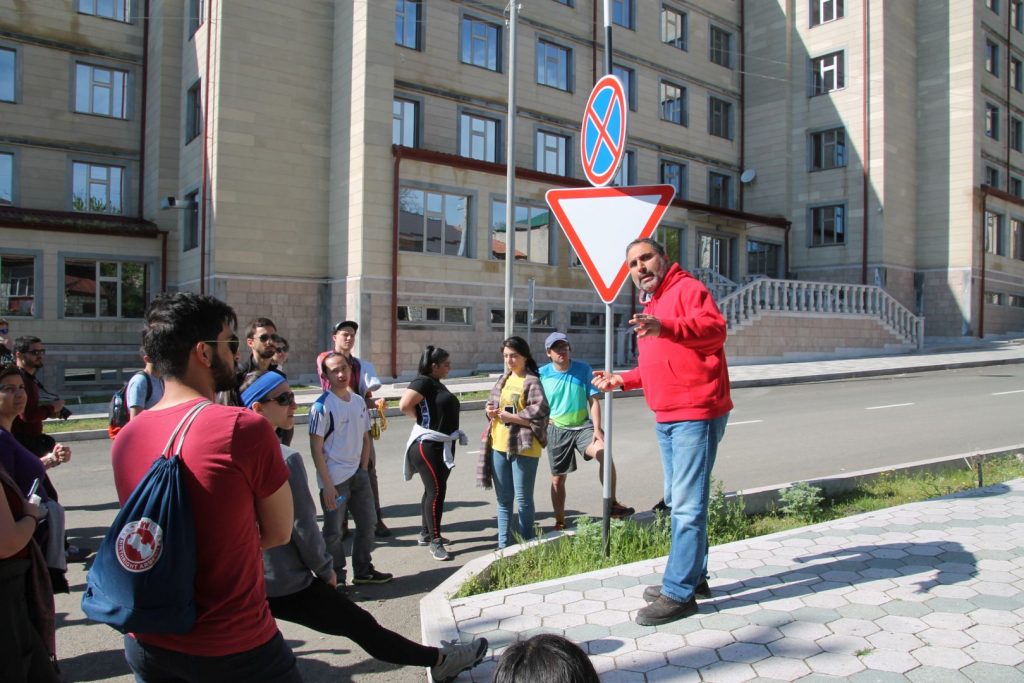
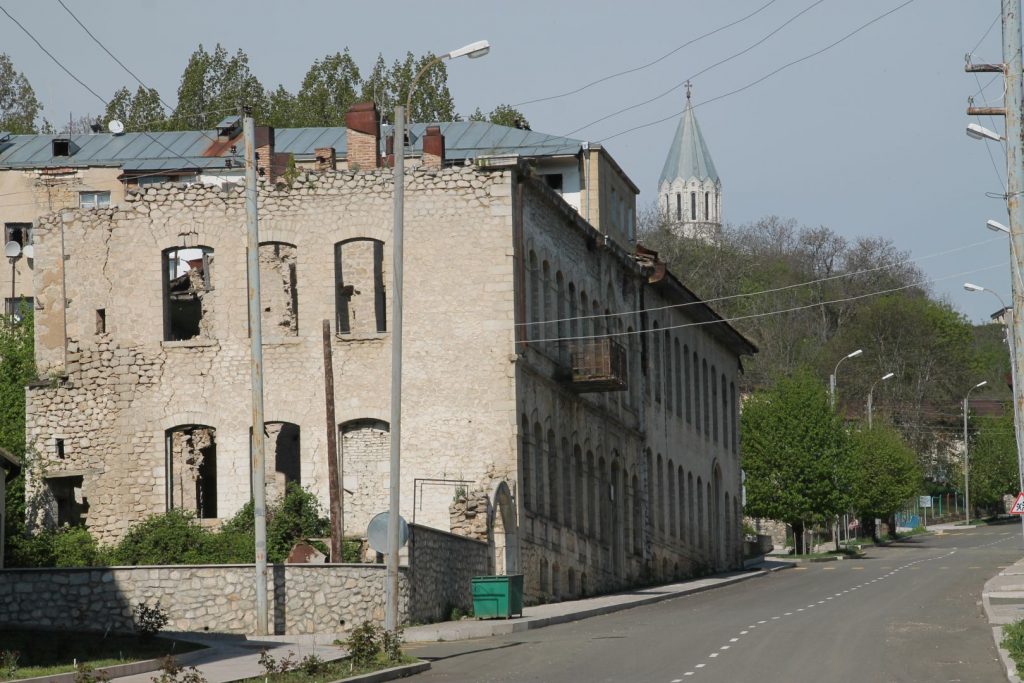
Destroyed buildings throuout all Shushi
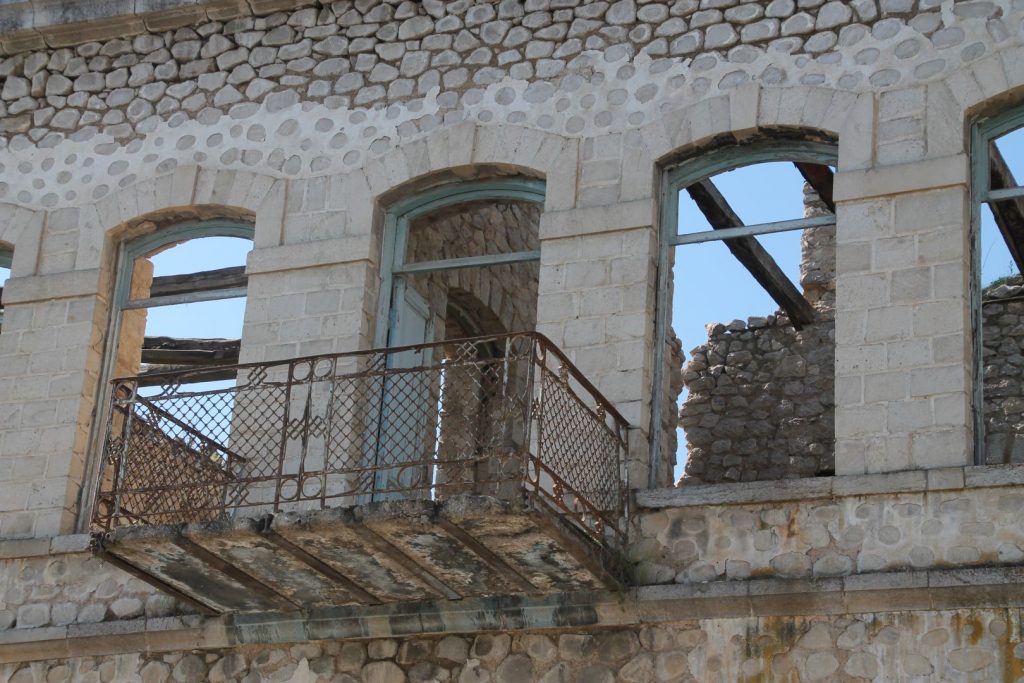
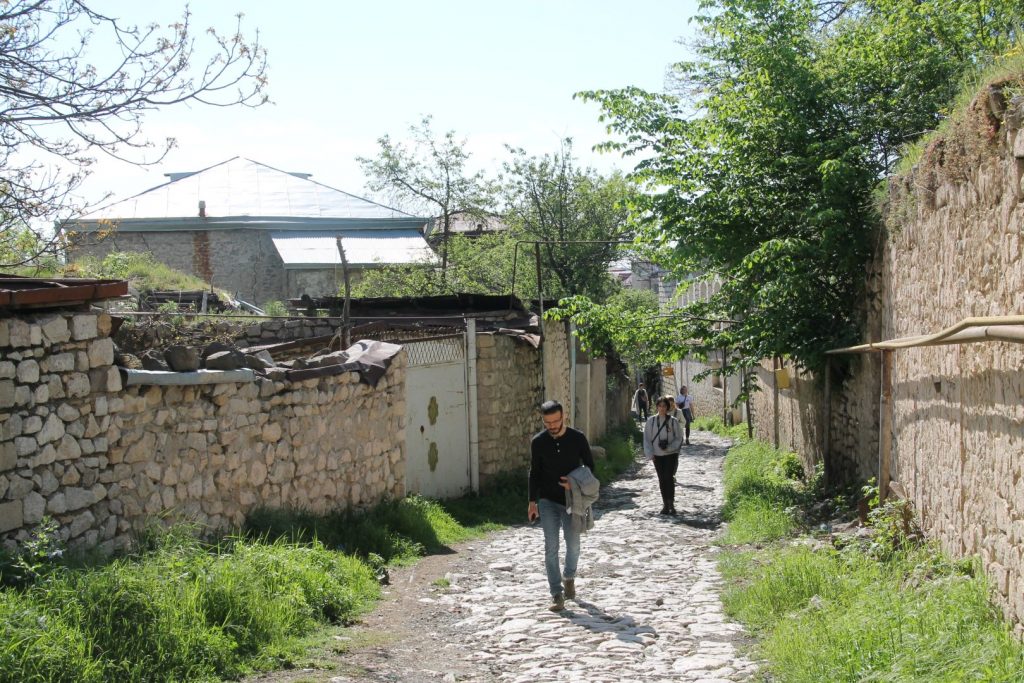
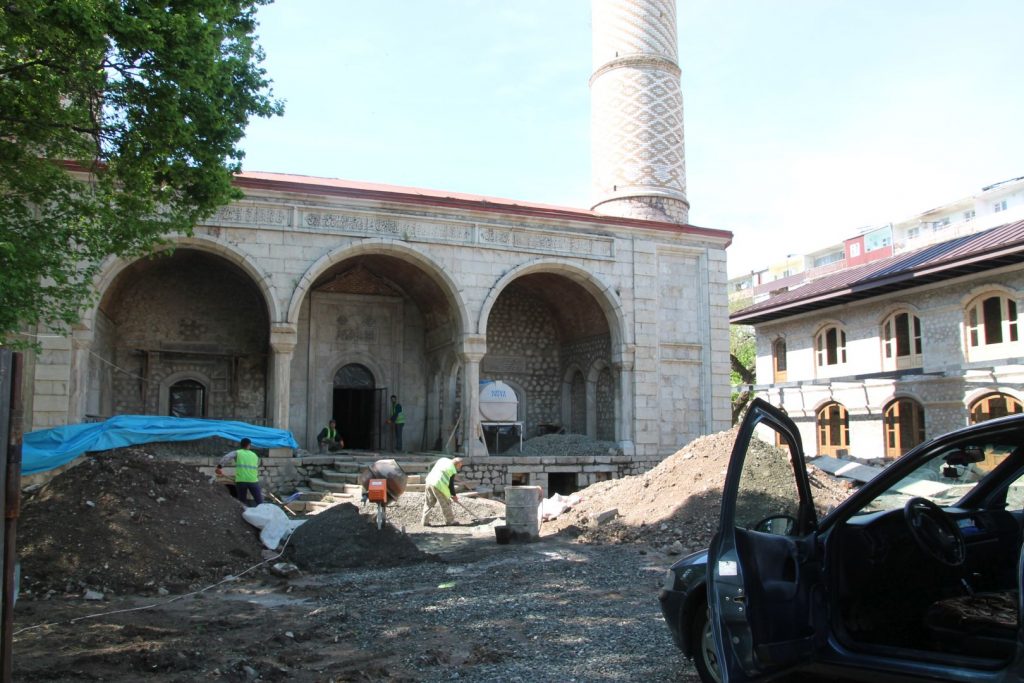
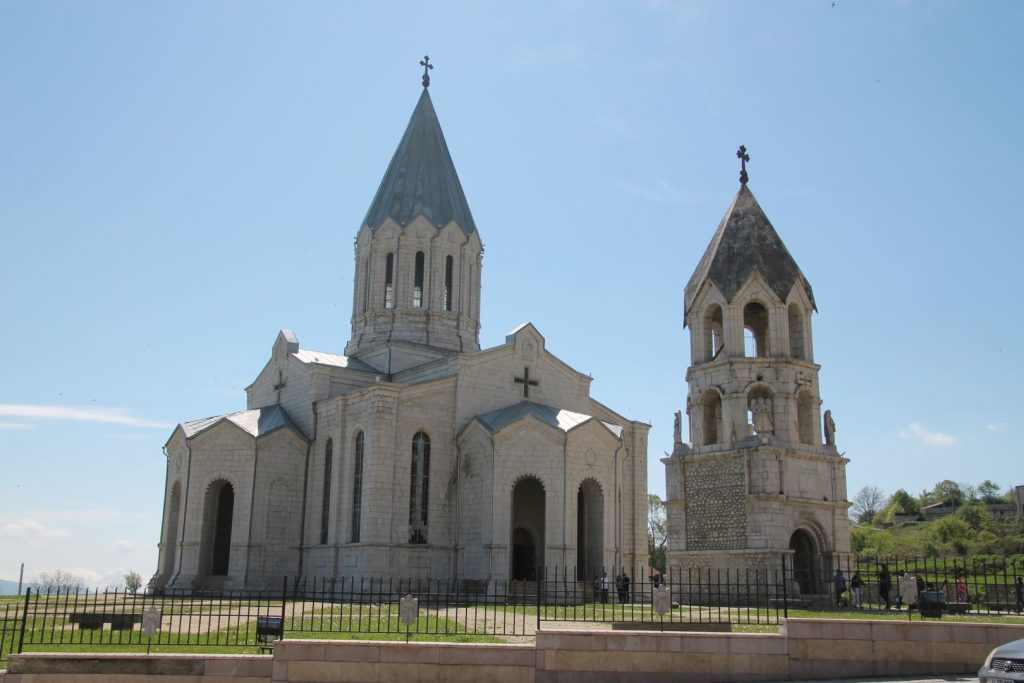
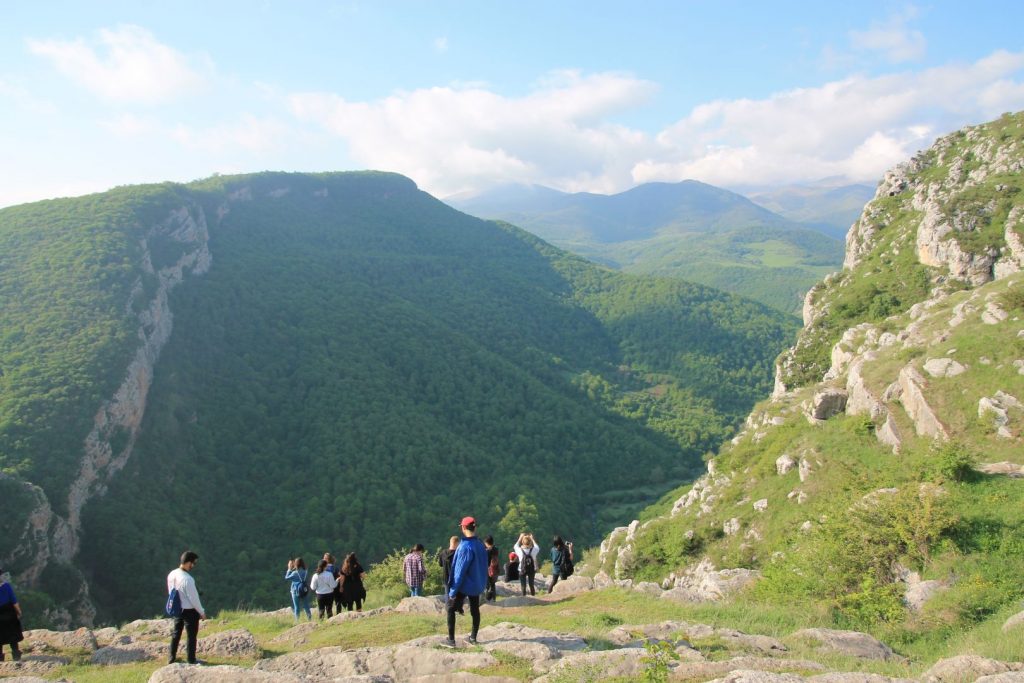
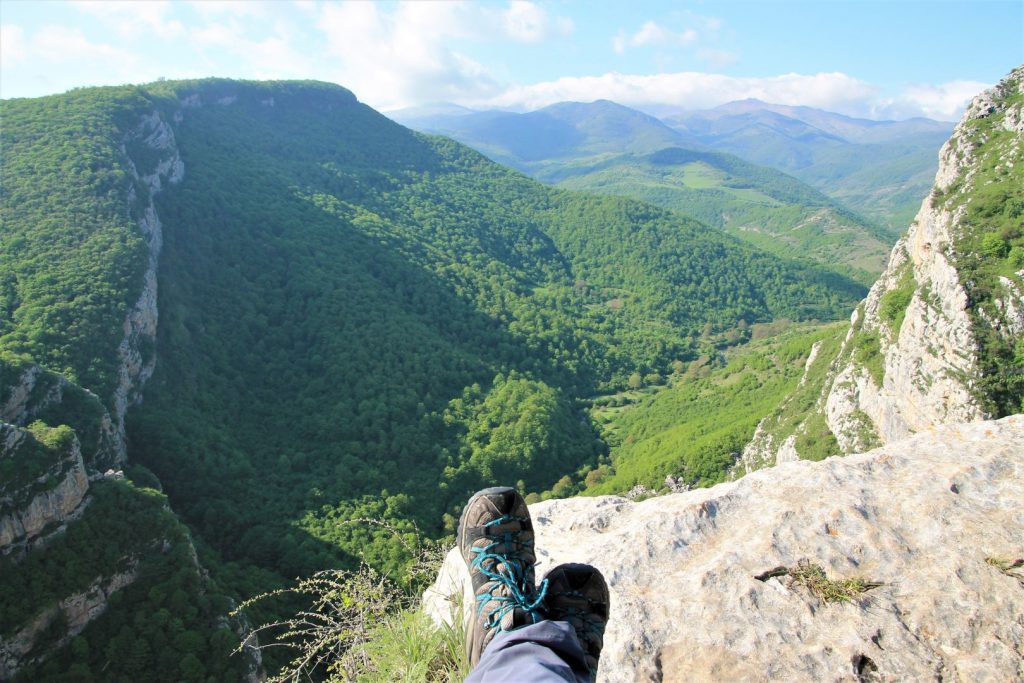
Military Base
On our first day in Artsakh we had the opportunity to visit two military bases. We have been welcomed and shown their tanks , we even were allowed to climb into them. According to the Generals explanations 70% of the tanks were captured from the enemy during the war, and repaired. I must say that they actually looked exactly like that.
We were then brough to a field where we could watch three tanks in action, speeding across and shooting at mobile targets in the distance. It was an impressive competition, all three tanks operated within their given time limit and with accuracy.
We had our lunch together with the soldiers, eating exactly the same and following their rules and routines for the lunch: we had to queue in a certain order to get in, we had to walk in a line, stand at the table until everyone was in, pray all together before we sat down, and the same routine after food. In this very organised way they managed to feed about 500 soldiers and us within 30 min or so. Funny enough, we ate more than the soldiers did, in fact they ate very little. I must say the food was ok, even if it was certainly not delicate cuisine. We had some sort of stew with potatoes, carrots and some meat in it, bred and some reddish salat, which was I guess beetroots, and some pasta, which no one touched.
We were shown around the place but unfortunately could not see their accomodation . All young soldiers we met where 18 and had just started their service 4 month ago. Most of them were Armenians from Yerewan or around. They are allowd to leave the camp occasionally, so consequently Stepanakert was full of soldiers .
We finished our visit with examining their training areas and were allowed to test their obstacle course. For those of us who tried it was a lot of fun and an enjoyable competition. The soldiers watched and smiled – I guess because of our incredibly unathletic performance .
Unfortunately any photography was strictly prohibited at both of the military bases so I only could take a shot from the distance out of the window of the leaving bus.
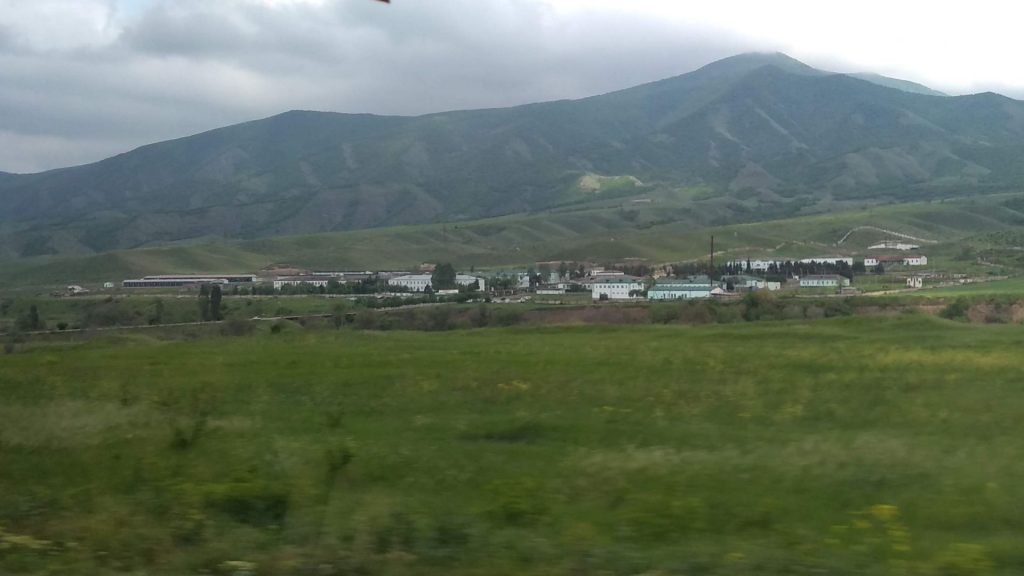
On our way from the military base back we passed the Interneational Airport of Stepanakert. It was newly (re-)built about 3 years ago but has never been used for any international flight. They told us that there is a serious thread by the Azerbaijan government that they would shoot down the first plane that takes off, and this thread is talken serious. I am not sure if this is true and also, if that is true, I am not sure if Azerbaijan would really do such a thing. But the fact remains, there is an airport, brand new, fully functioning, but never used. Like at home I thought, thinking of Berlins BER-airport.
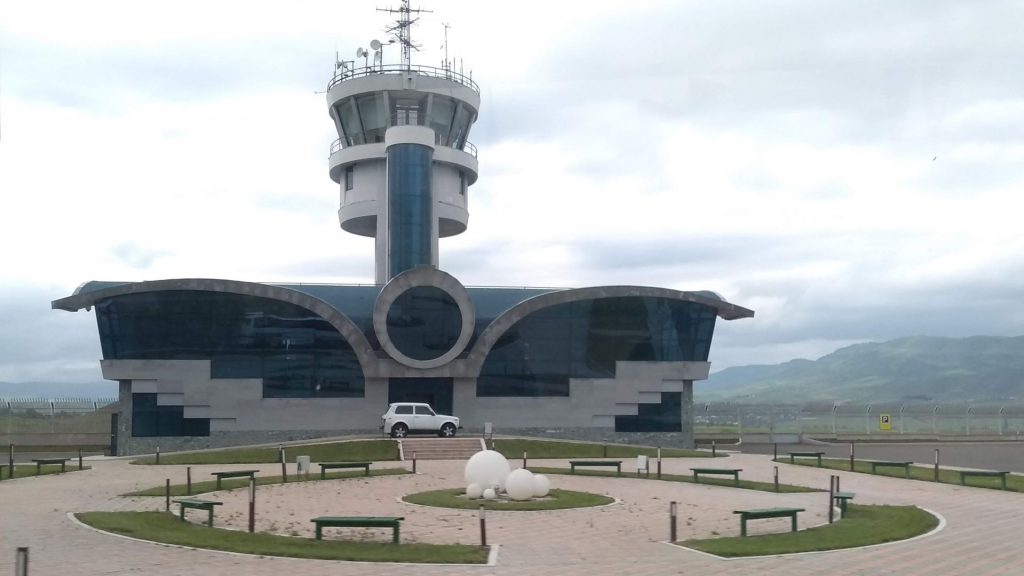
Arzokh Hike
We went to explore, to see and to experience the beautiful landscape of the Artsakh mountains. So we drove off to a little village called Shekher on our third day. From there we hiked up to the top of the mountain and down into the village of Arzokh. It’s a hike of about 4 km which took us 2,5h. The famous cave of Arzokh we did not see unfortunately – don’t miss that! We were compensated by a faboulous lunch in Arzokh, prepared by Aro and his very hostpitable fellow villagers. All self made! Half of the village must have helped to feed us 65 people! Thank you!
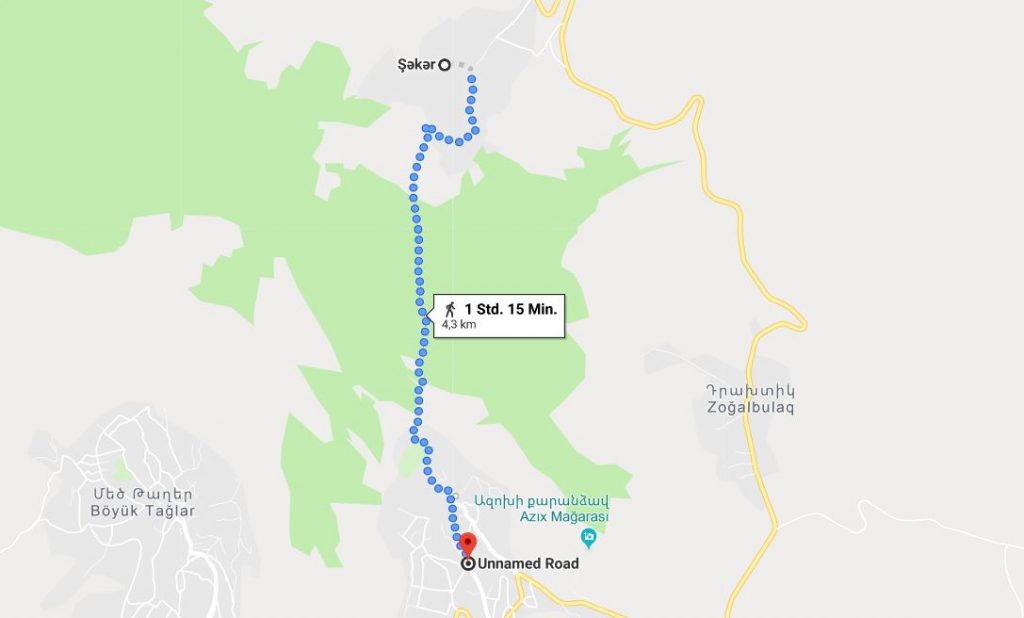
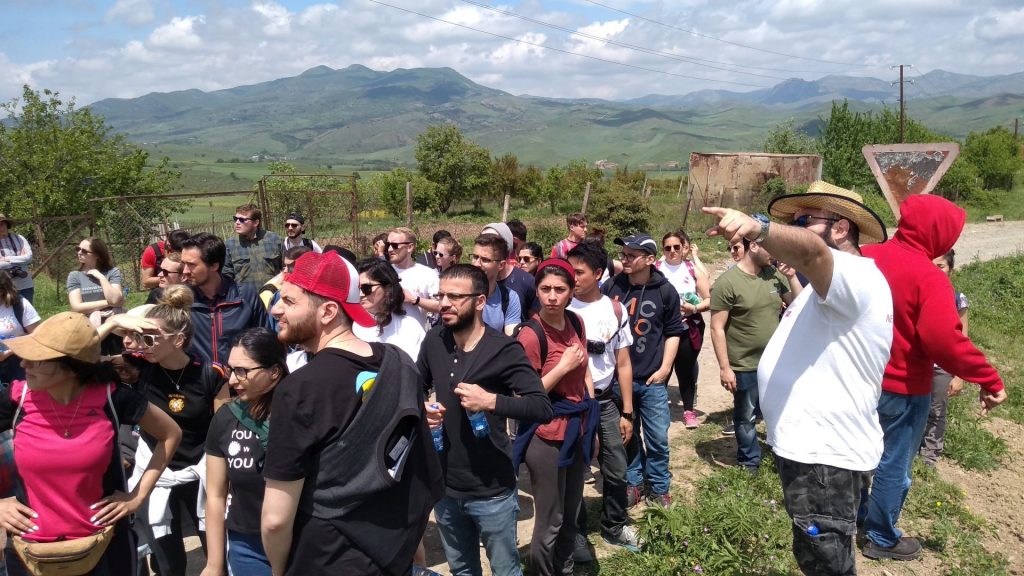
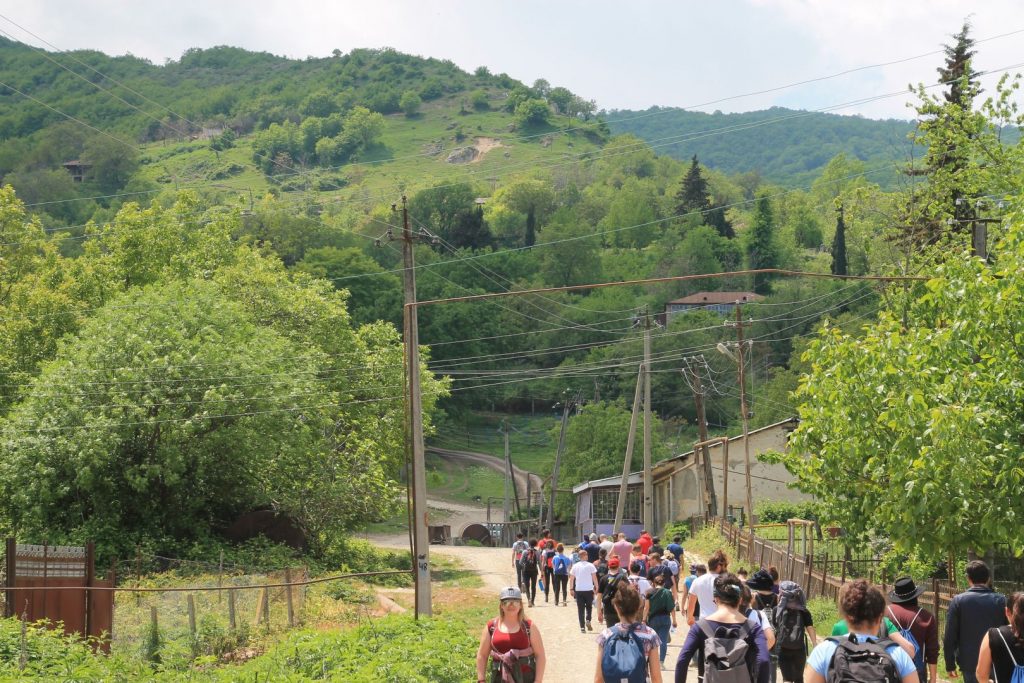
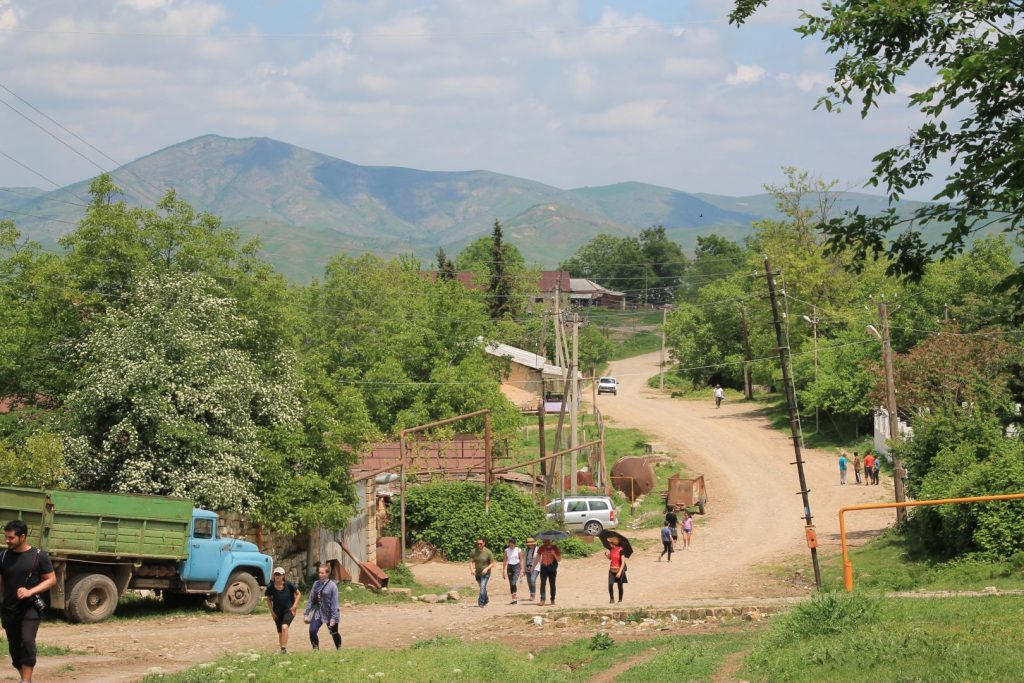
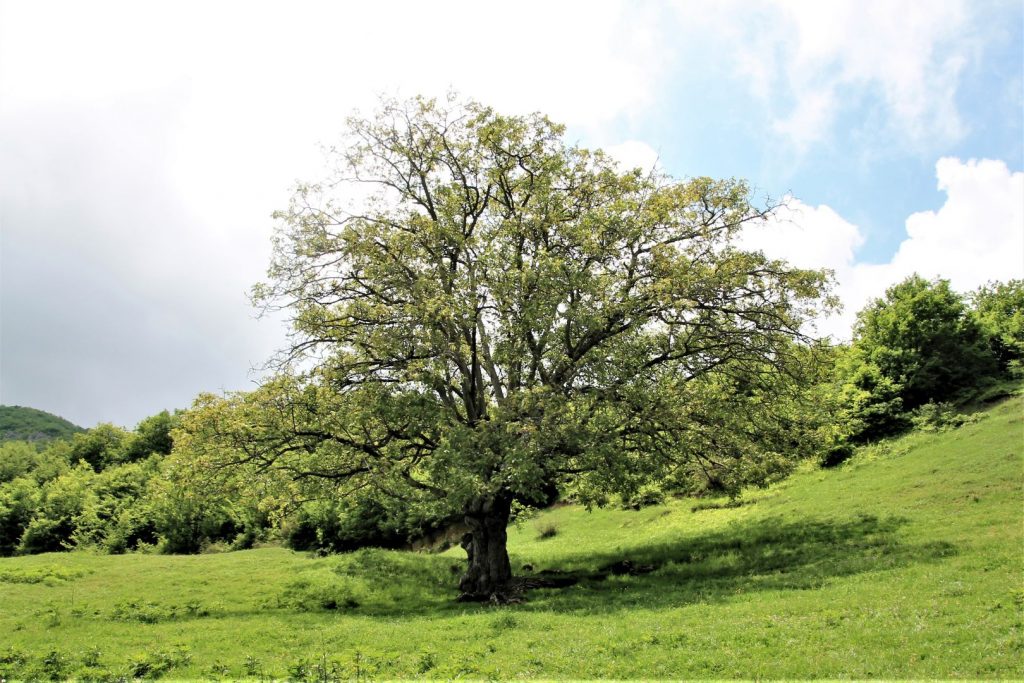
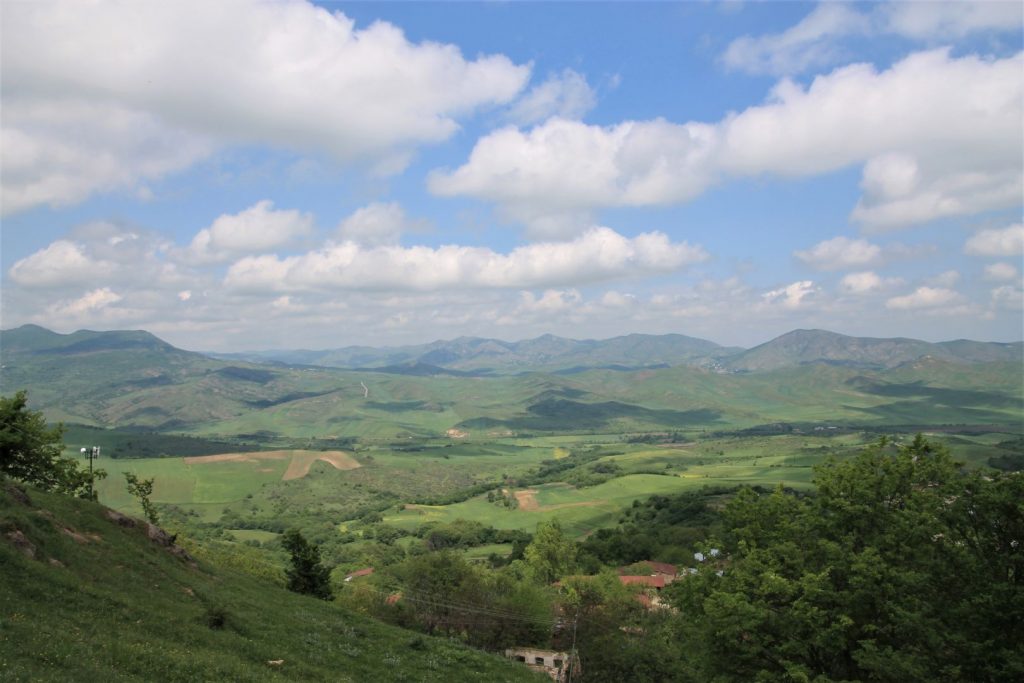
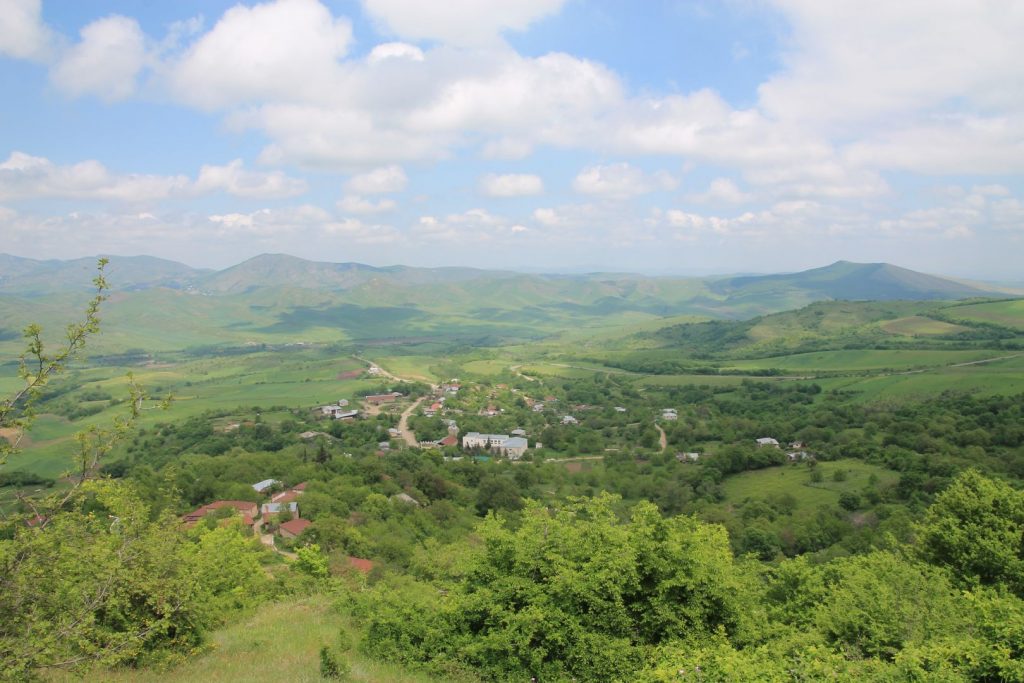
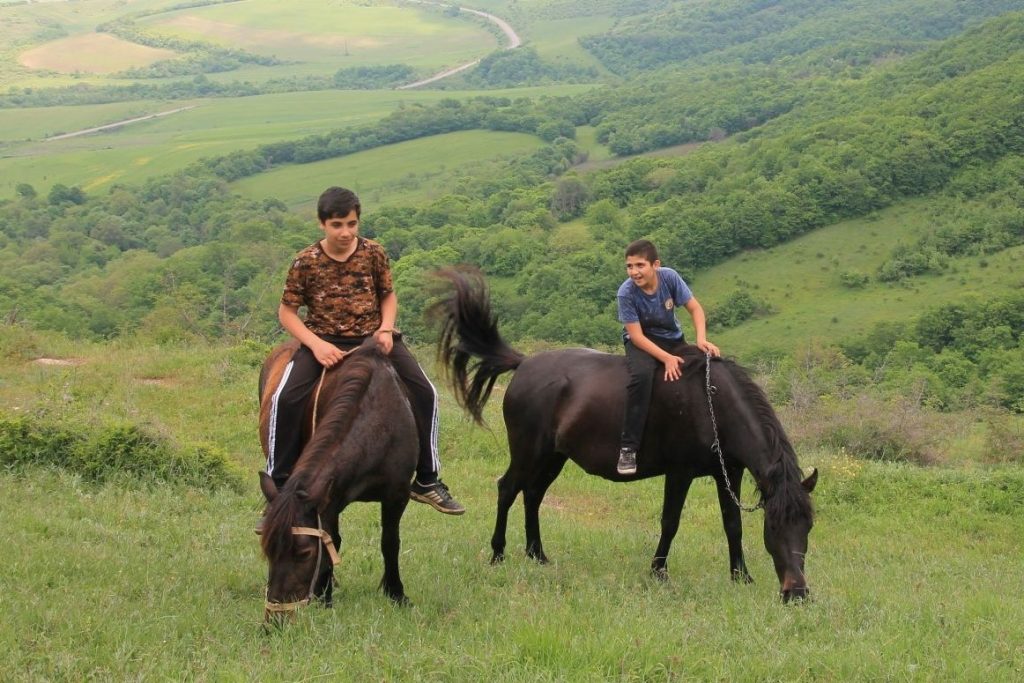
Two boys followed us on their horses from the village up to the mountain top
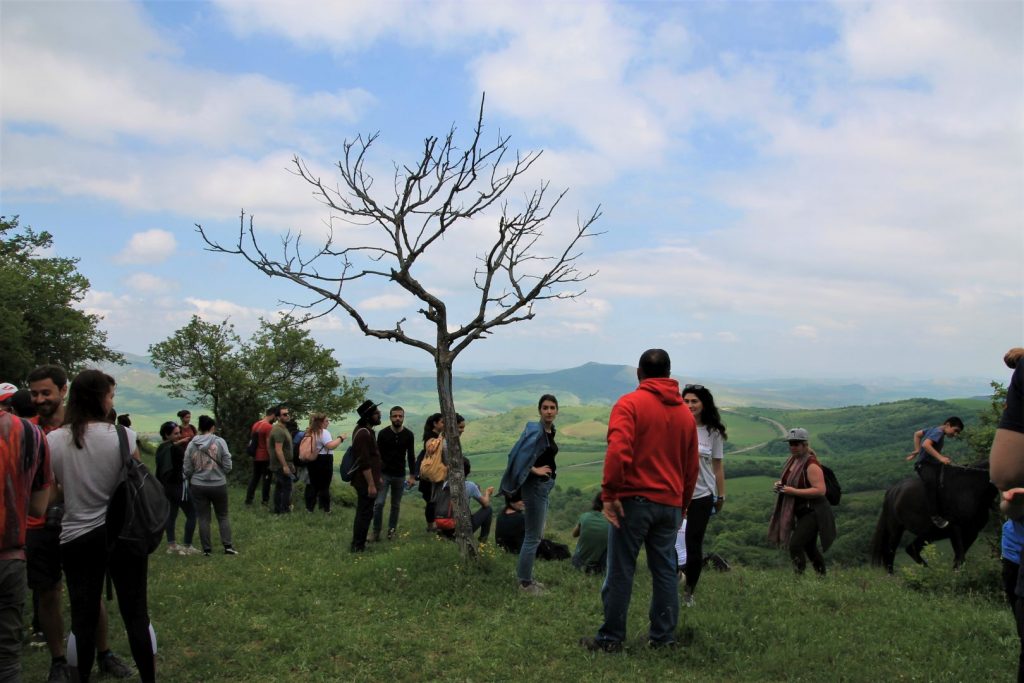
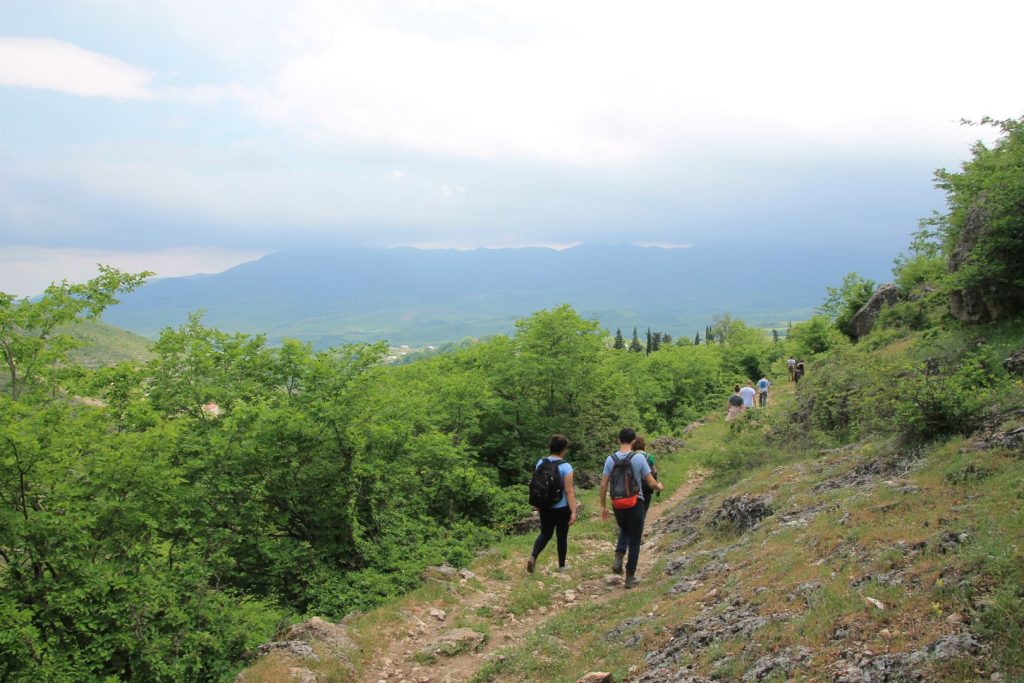
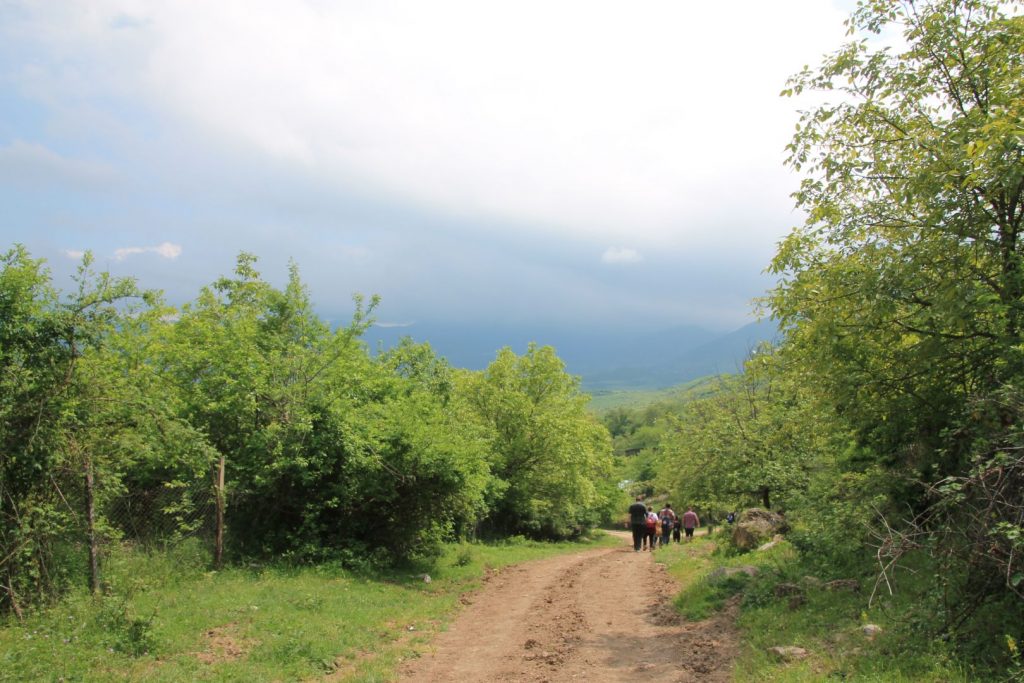
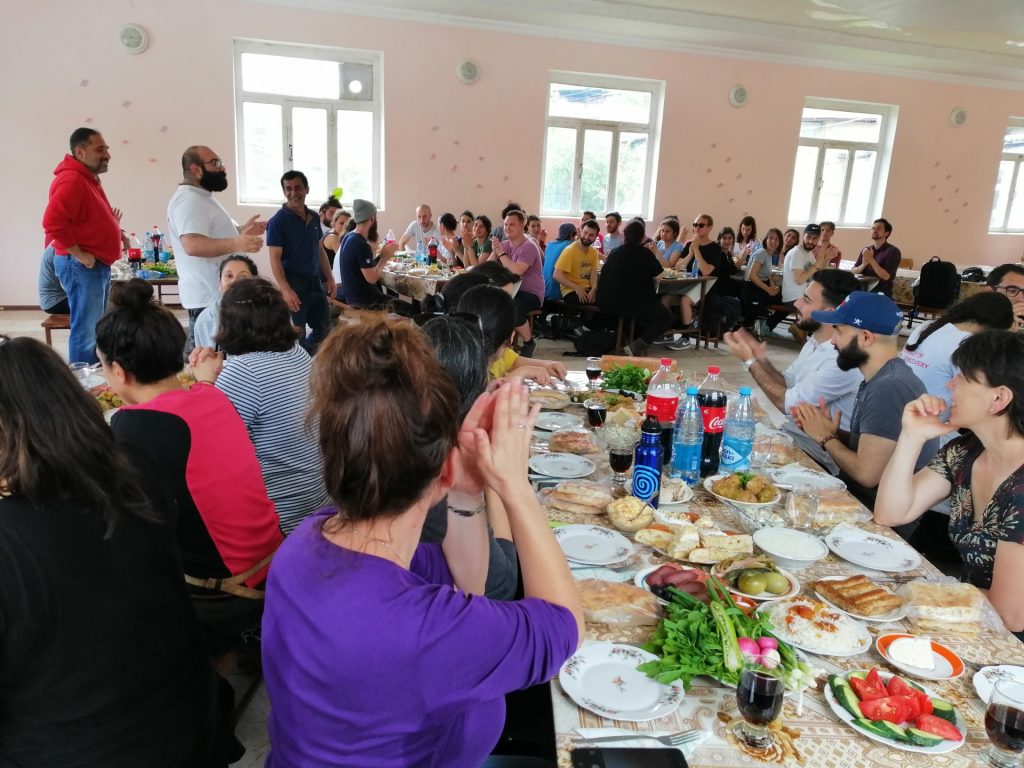
Togh Winery
How to you carry 65 people to the winery when the roads are so bad that the bus cannot go? You load them onto a big КАМАЗ! About 20 min drive from Arzokh village there is the winery Togh. We were welcomed with flowers and a glass of wine (in real glasses) for everyone. We were told their story of wine making and also about their participation during war: the story about an exchange of Azerbaijani bodies against Armenian prisoners for which they themself volunteered as a human deposit. The wine was very good so I bought a bottle (5000 Dram) for our host family and another one for Marina to give as a present.
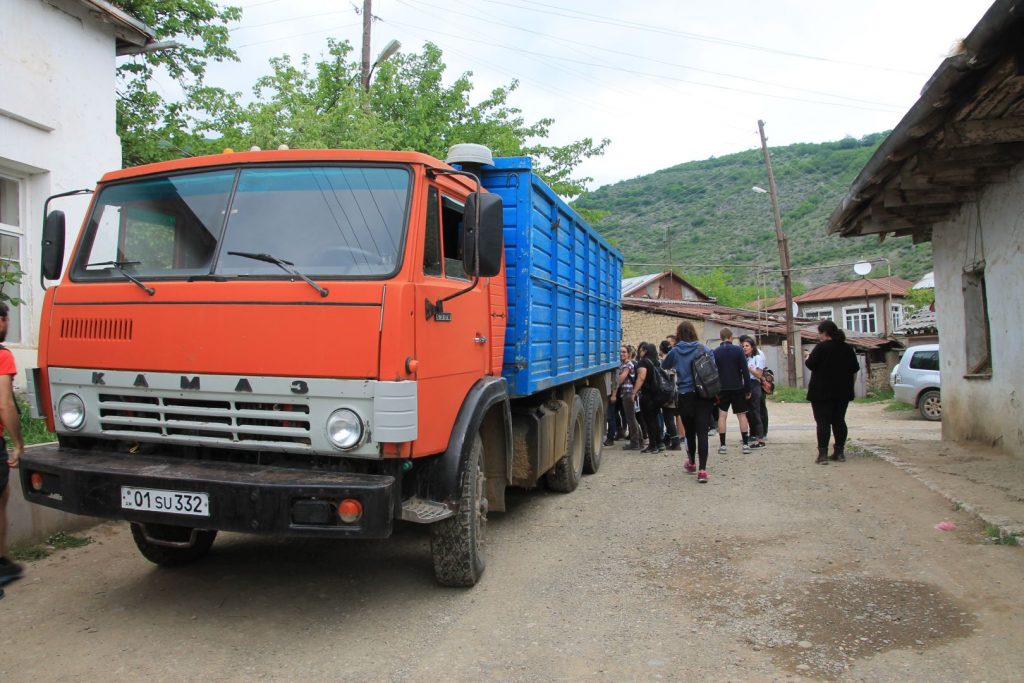
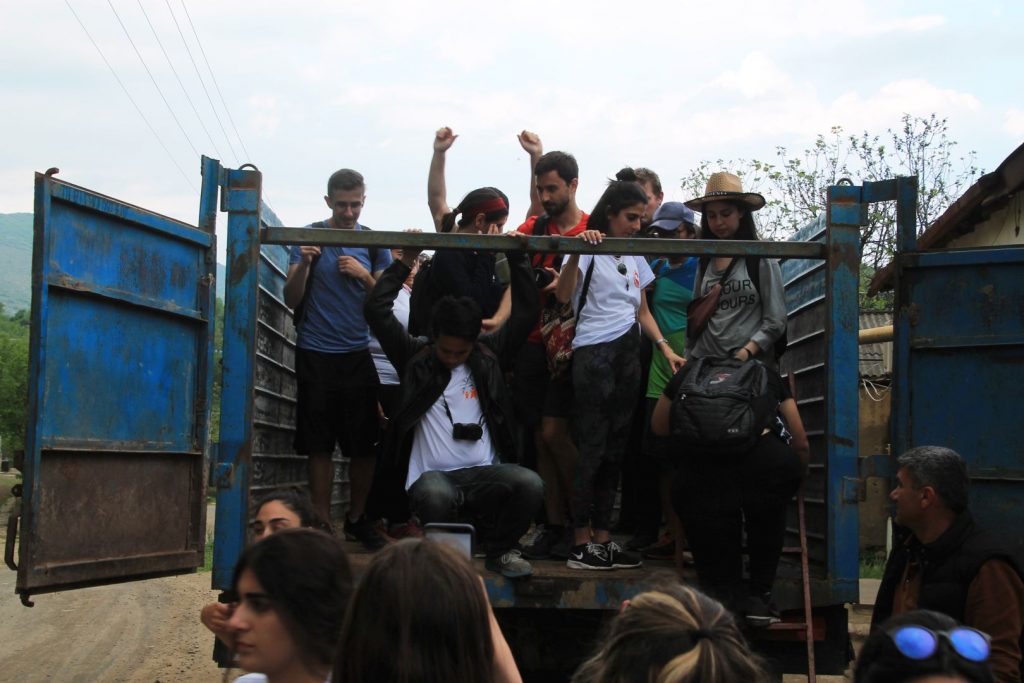
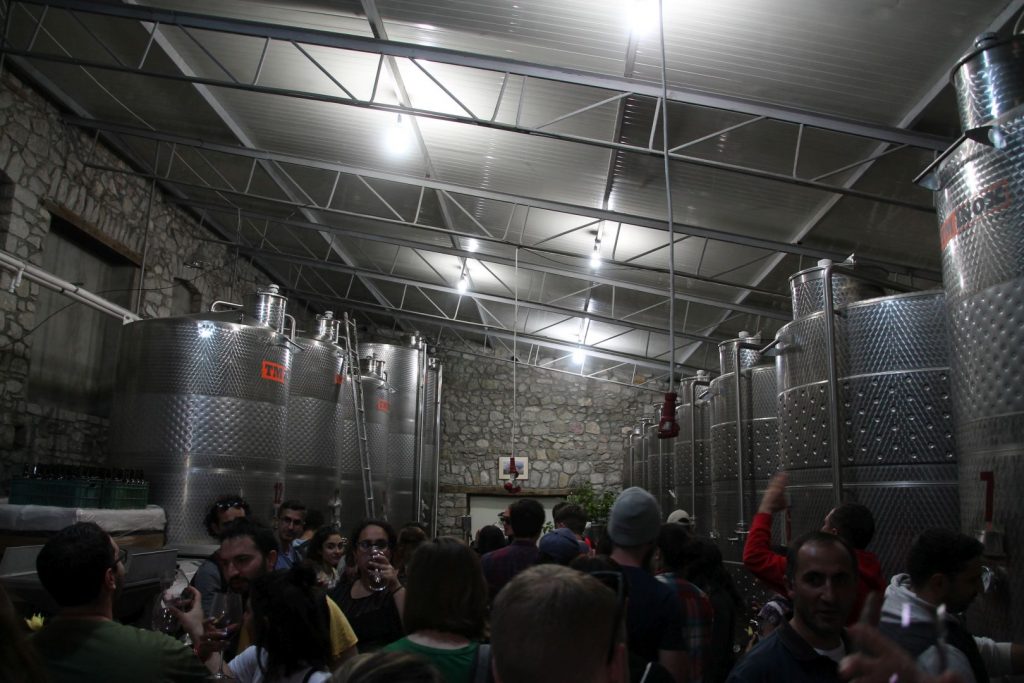
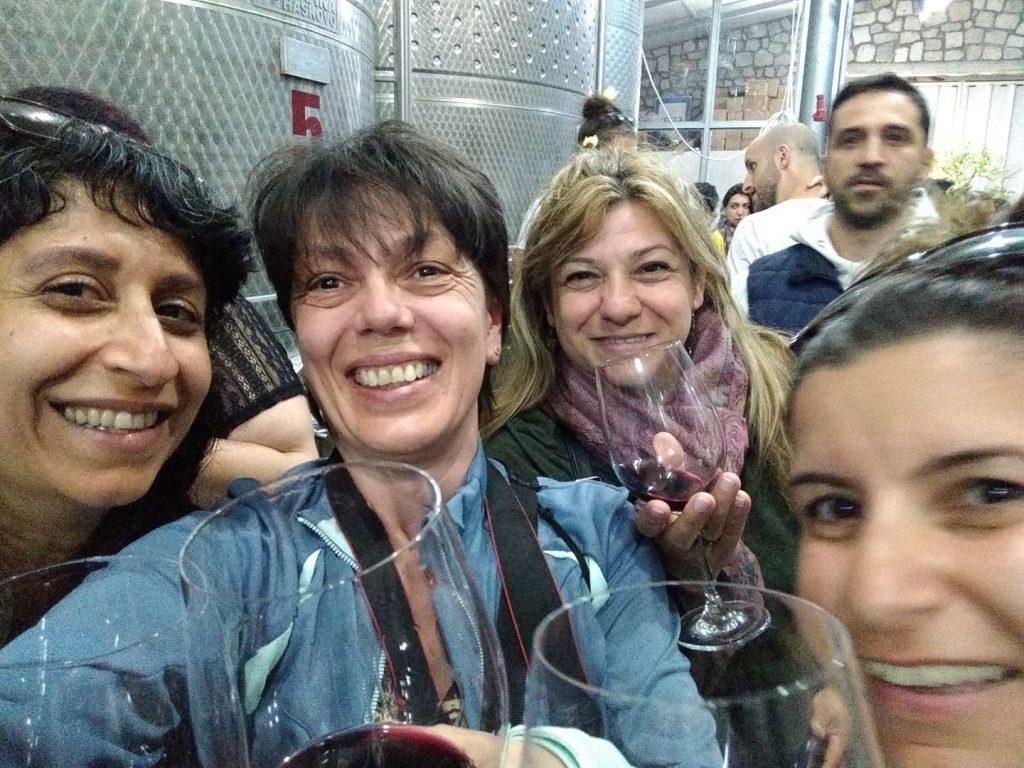
Winemob
The Winemob is a game that AVC and/or Birthright staff invented and they doing it on every excursion to Artsakh. The idea is to experience the Armenian hospitality. They divided us in teams of 5 people with at least one Armenian speaker. Each team received a bottle of (actually very nice) red wine. The goal of that “game” is to find a resident of any flat around that agrees to invite us in and drink that wine together with us. Rules are this: Each group was allocated to a certain block of flats. There they go and knock the doors, offer the wine and ask the people to drink with us. We were given a time frame of one and a half hours and the bottle must be empty by then. Drinking alone is not allowed.
I must say I really felt uneasy at the beginning and was close to drop out but eventually did it. My group needed five knocks and at the sixth door we were invited into the home of a family of five: father, mother, two little boys and a niece. They drank some wine with us, but they also brought some snacks like cheese and vegetablesto the table, then coffee and later icecream. Conversation was in Armenian: a small talk about who we are and who they are and what we do and they do etc. My Armenian is very little so I could only sit and smile. For all of us the experience was entirely new. And yes, we were amazed by the hospitality of those people.
Later in the bus on our way back each group was sharing their experiences. All of us had met people willing to open their home despite the invasion of five complete foreign intruders on a Saturday evening. All of us had met people who did not only drank some wine but also shared their time, their home and whatever they had to contribute to the table.
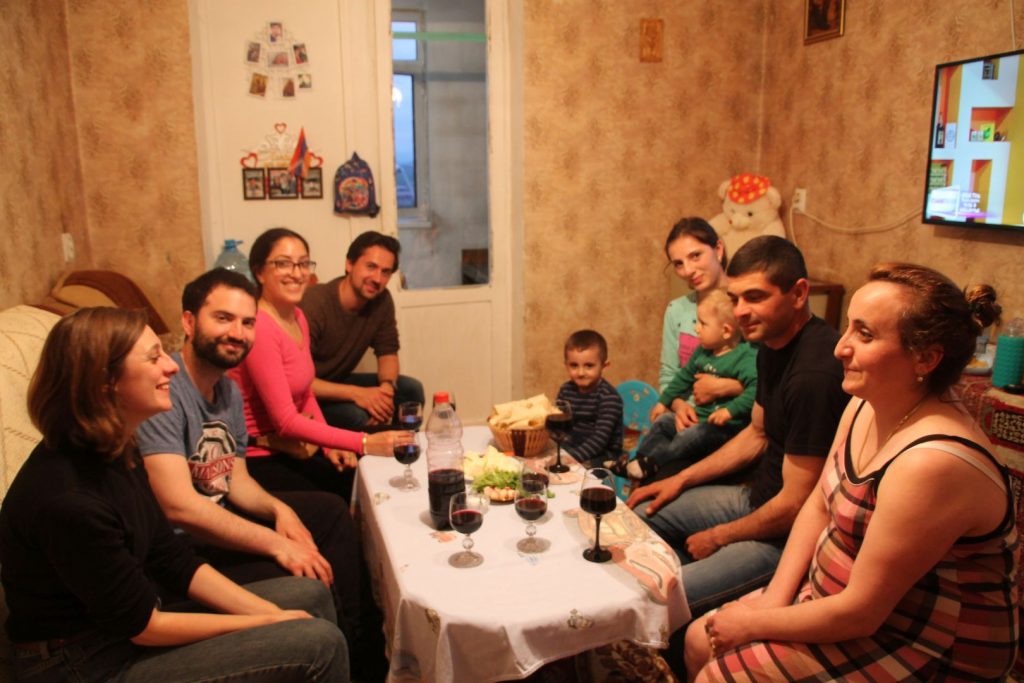
The very same experience we had the very next day at Saro’s house. He had invited all 65 of us for dinner, had prepared the room, set the table and cooked delicious food for all of us (with the help of his family). We sat on wooden boards hold by the few chairs he had, so that everone could sit at the table. Actually on of them broke due the weight of so many people but with the help of some books we solved the issue. That evening many toasts and words of gratitude were expressed to honor all the good things that we were lucky enough to experience: hospitality, trip organisation, adventures and friends, deep insights and learning, and wishes for a peaceful future.
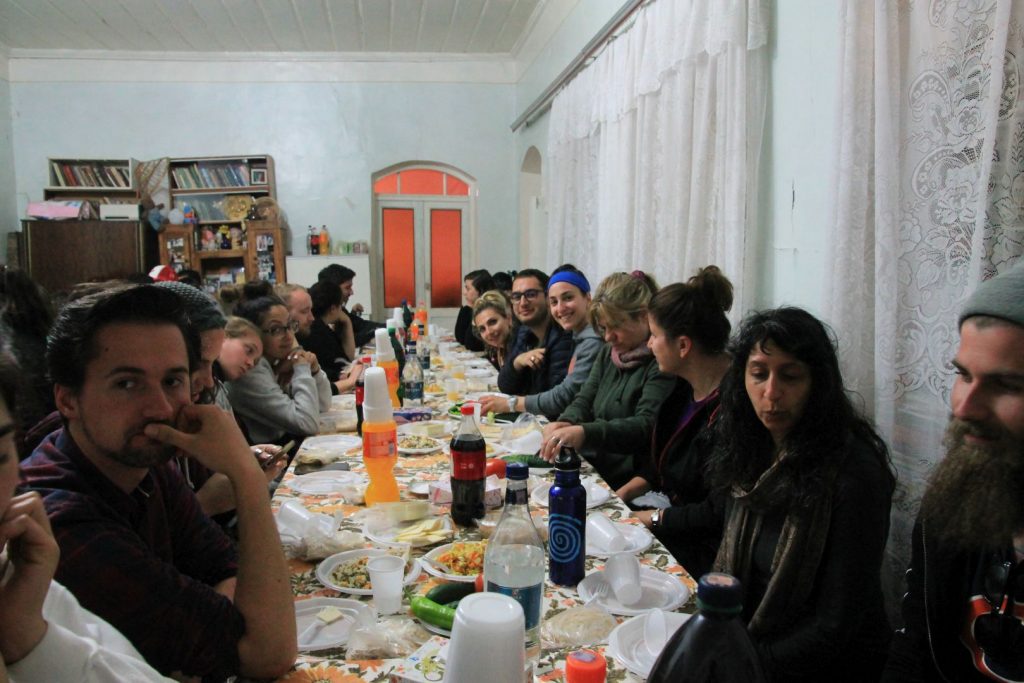
Gandzasar Monastery
On the fourth day we travelled the north route back to Yerevan. This route took us near Martakert to the Gandzasar Monastery where we had a late lunch. The monastery was built between 10th and 13th century and holds some important medieval Armenian manuscripts. This monastery sits – again – on a mountaintop and provides a beautiful view if the weather allows. On our day the weather did not allow. So we were sitting inside the church on the floor and calmly comemorated all the things that we had experienced during the last 4 days.
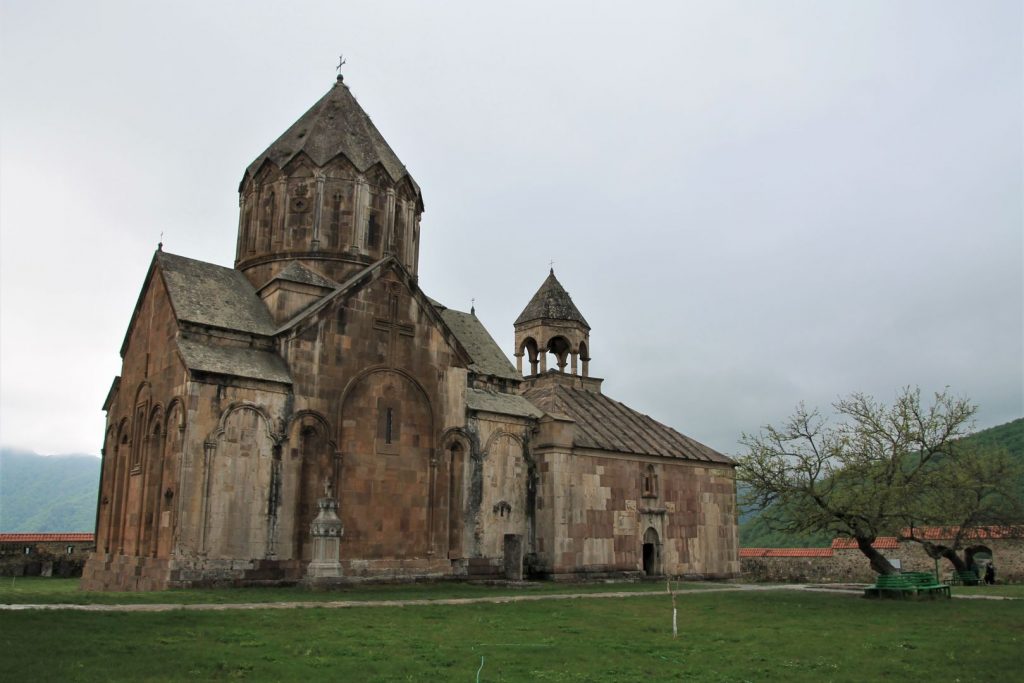
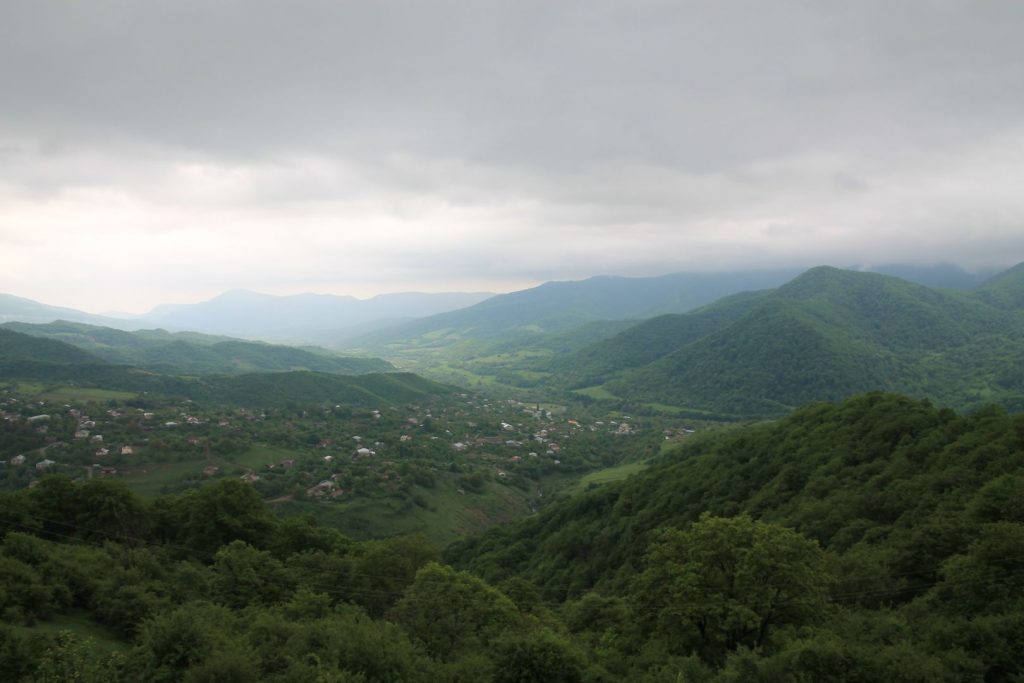

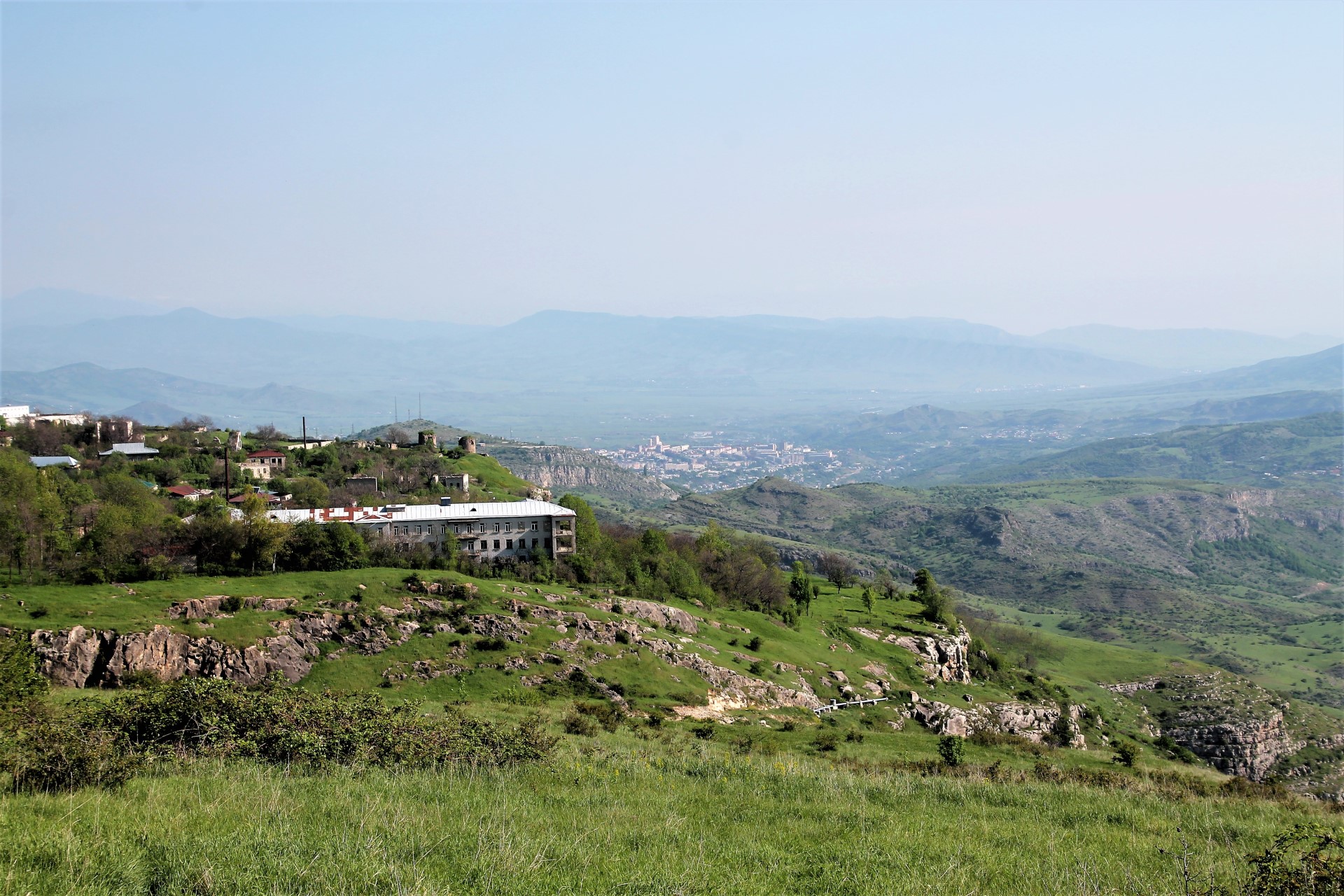

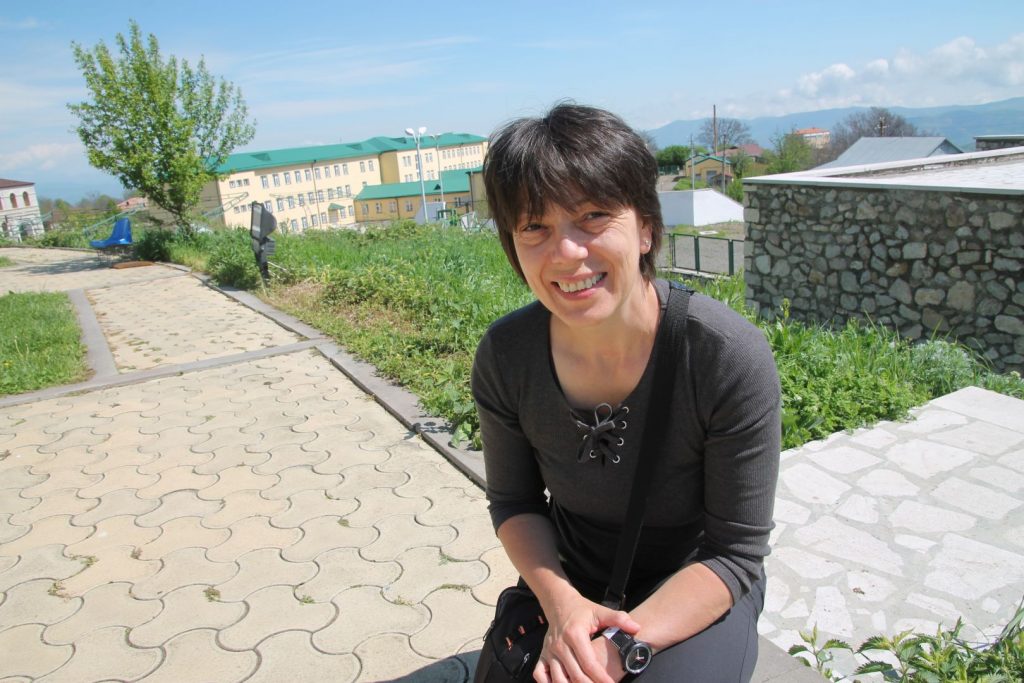
Hi Esther,
thank you for sending hugely interesting reports and lively photos.
Cheers
Monika (currently in Canada)
Any time. Please also let me know about your adventures!
Adventures? 🙂 I have become a grandmother on 23 May! Little Ayda is born, my daugher’s baby girl.
That is great Monika! I hope all are well and wish the most amazing times with your grand daughter!
Great blog Esther! You have truly well documented this trip to Artsakh. I think anyone reads it will have vast interest and vital information to how they would get the most of their Artsakh visit.
The photos are really nice and I enjoyed reading it in full. Looking forward to your next blogs too.
Thank you Dzovinar, I am so happy to hear that, and also to hear from you! I hope that people get inspired to visit Artsakh and discover the reality of this region and get to know those amazing people. I myself am still learning.
Best wishes to you, Esther